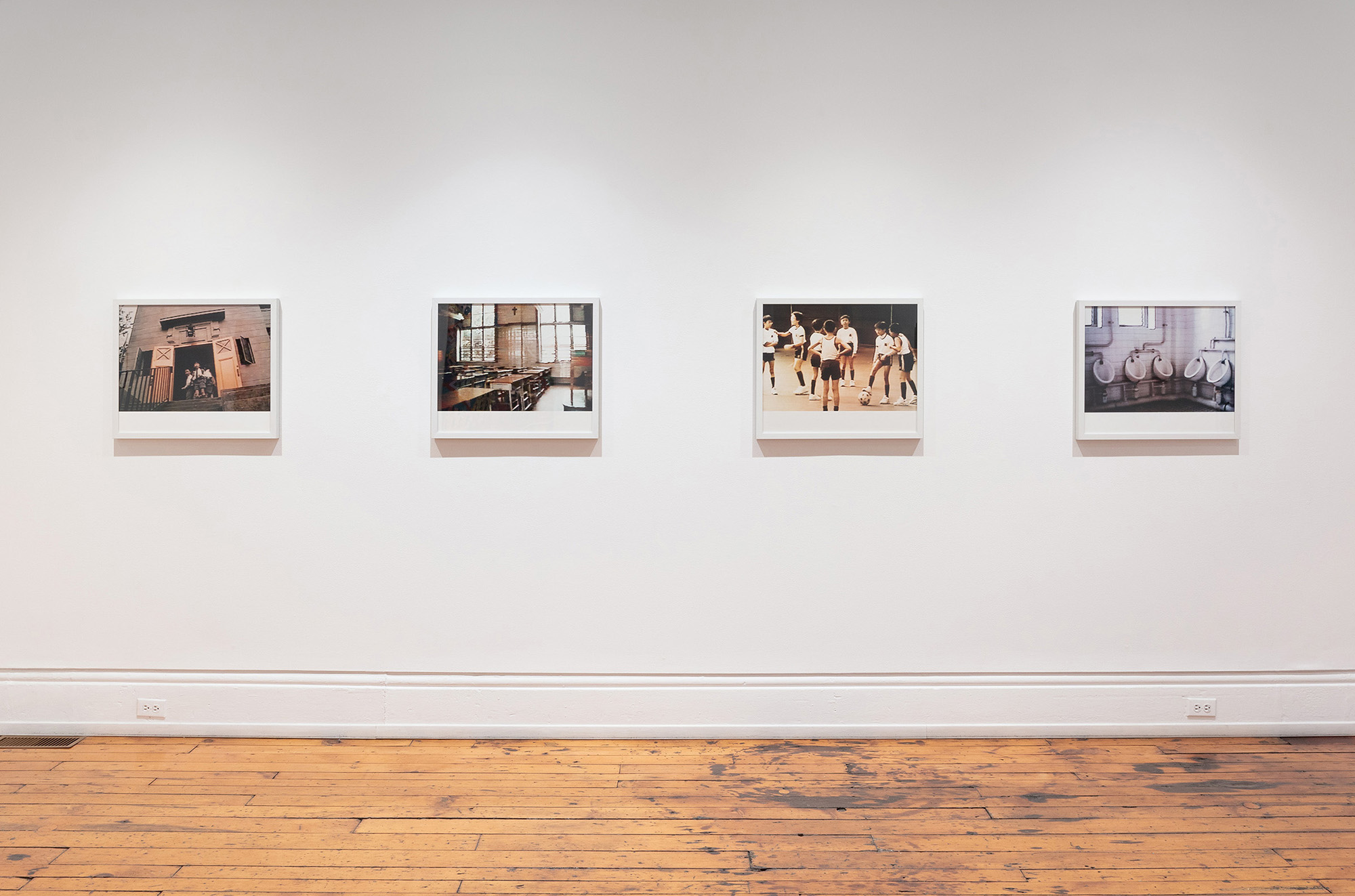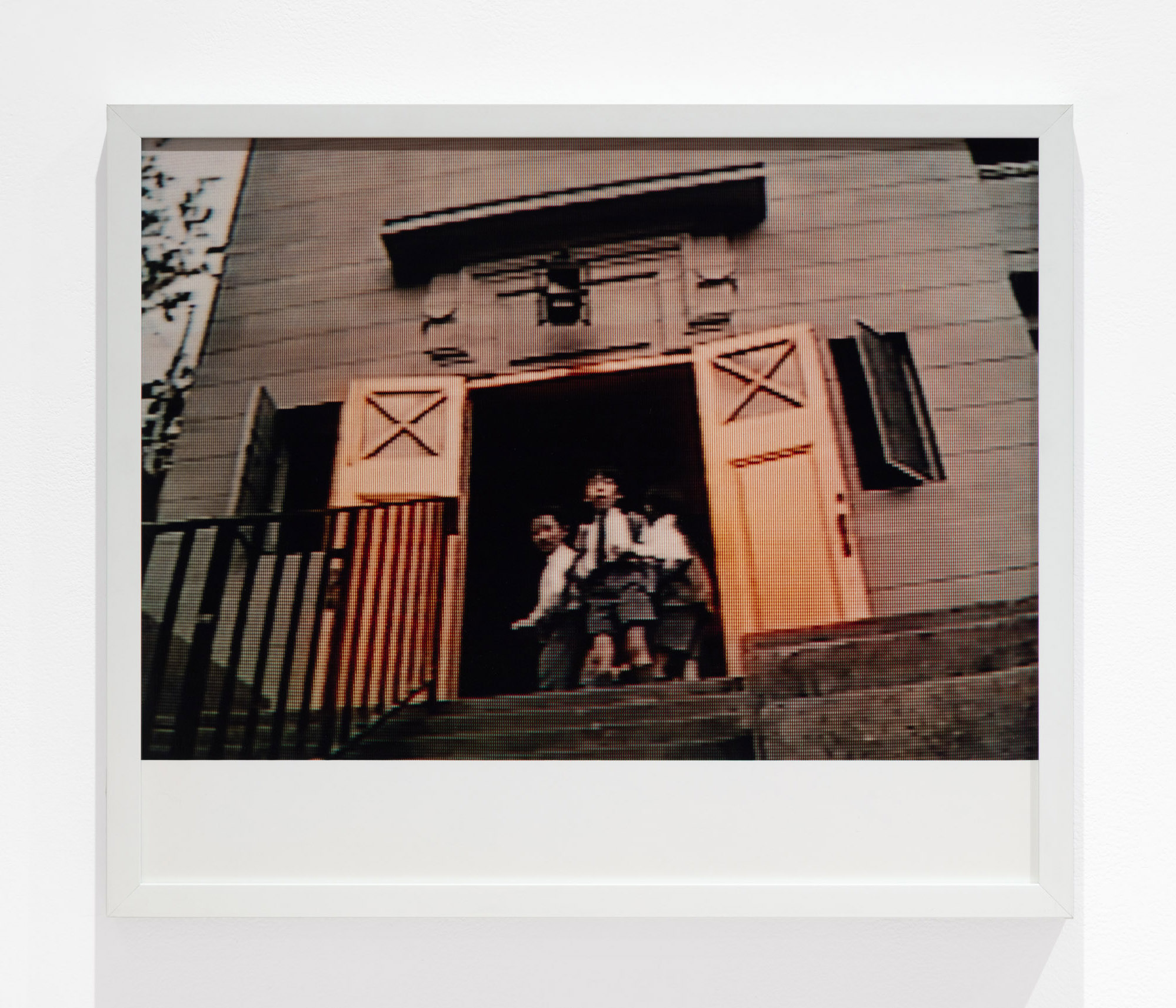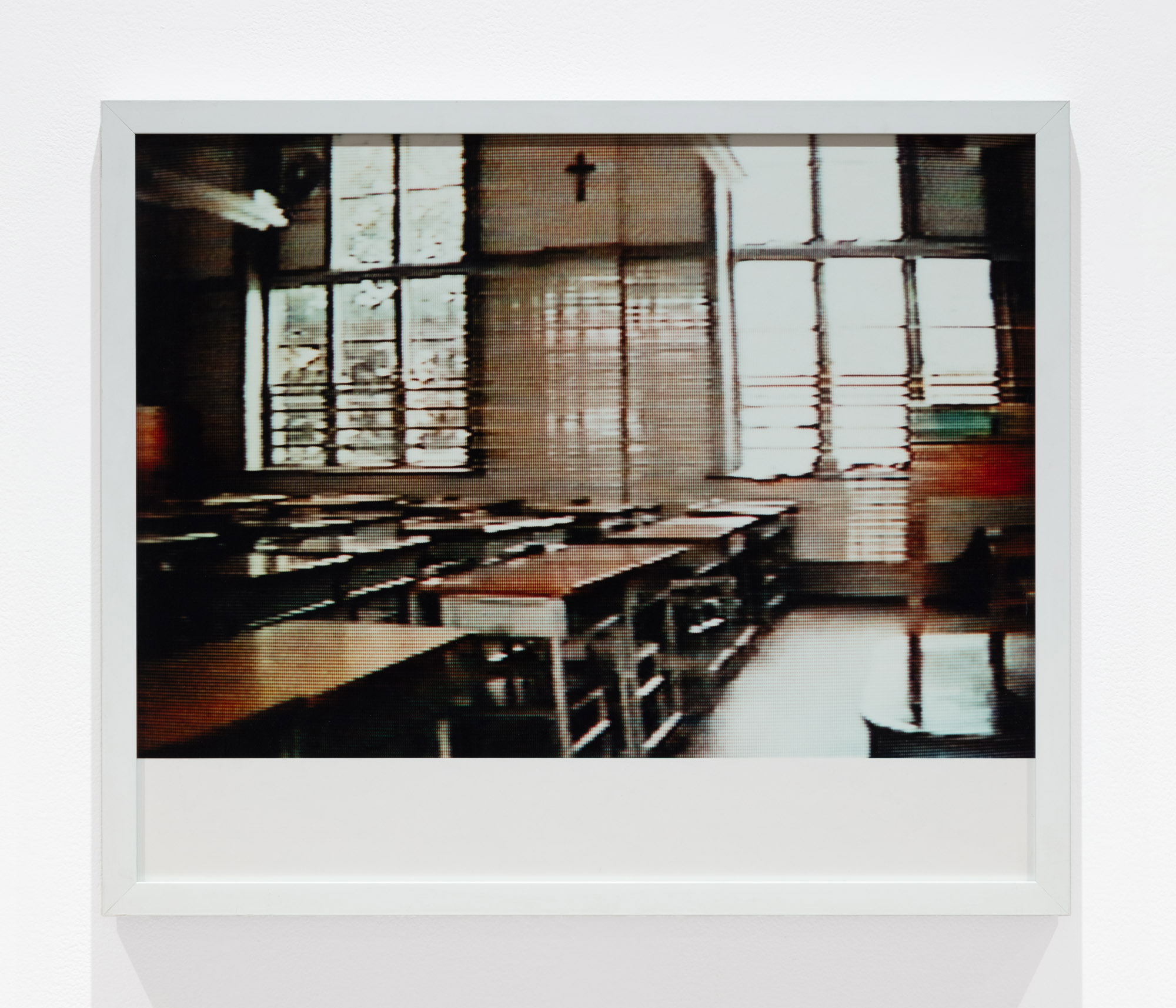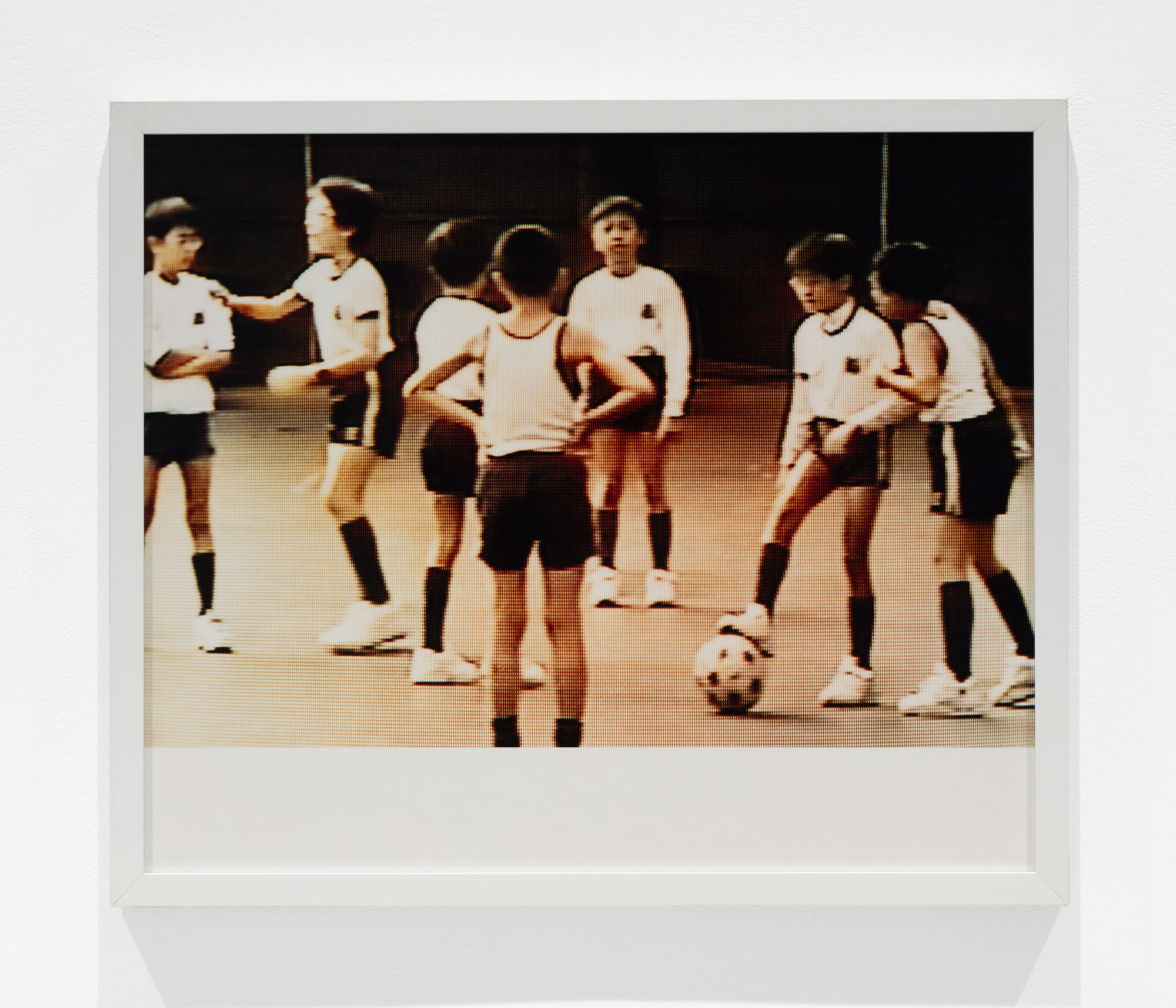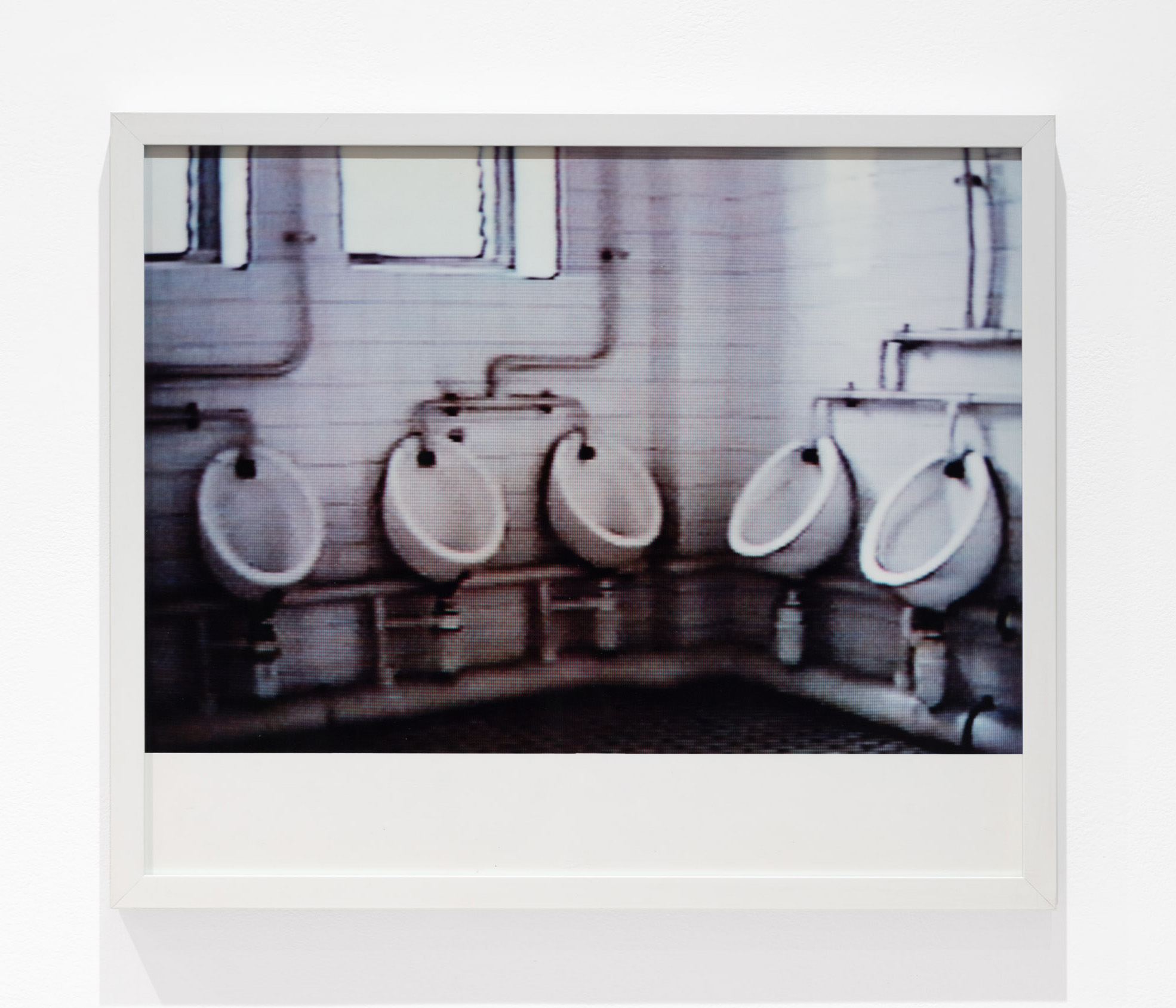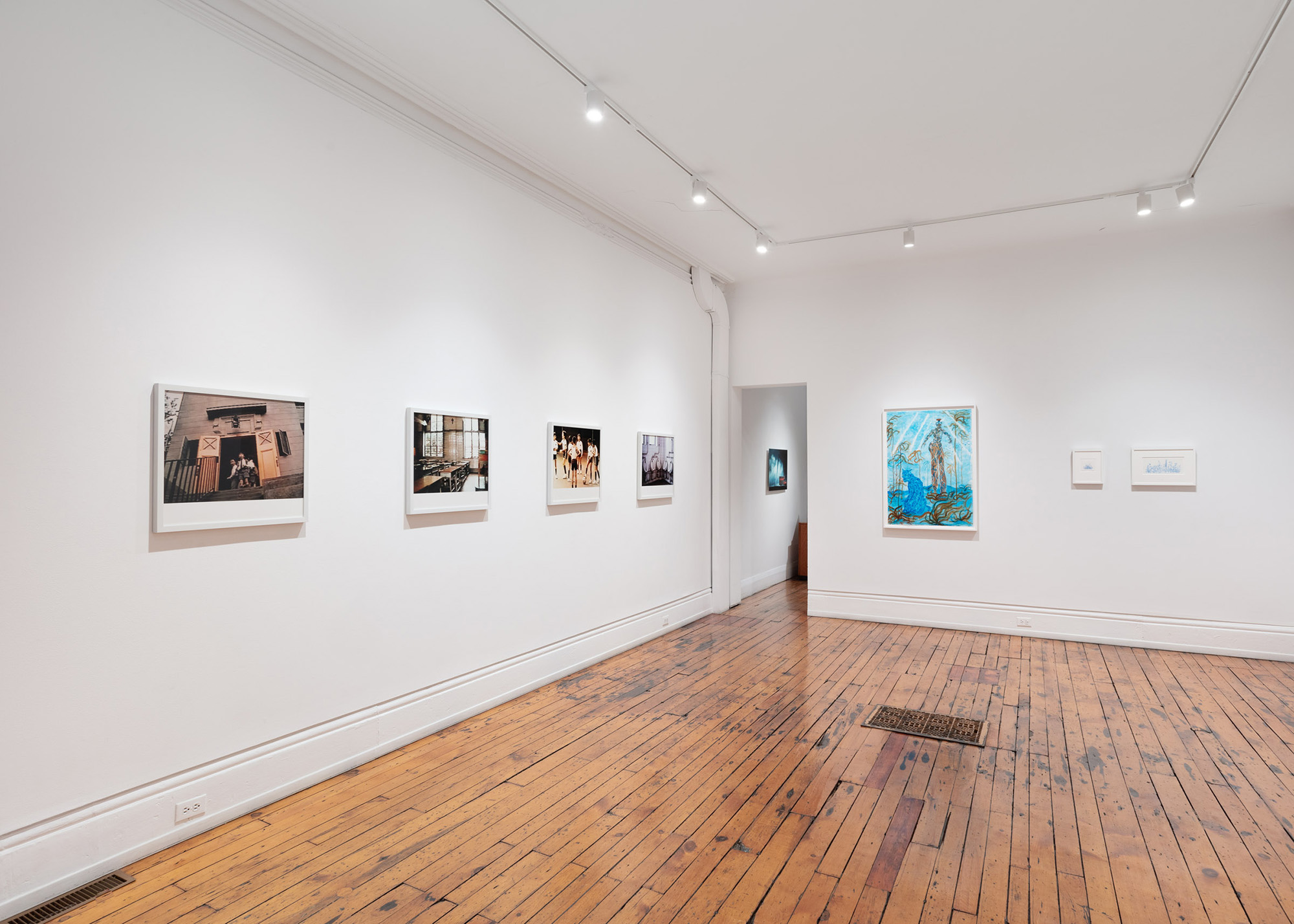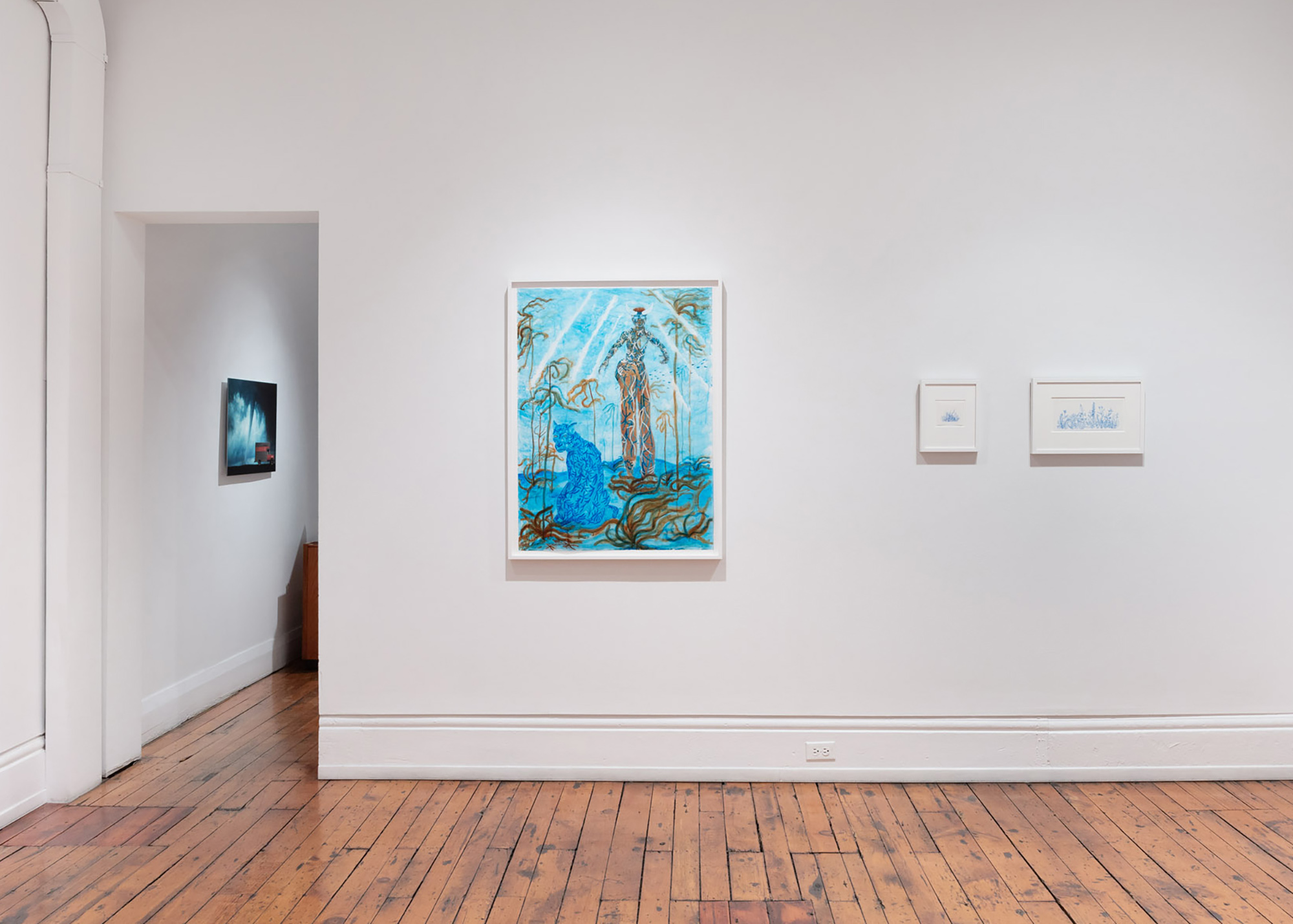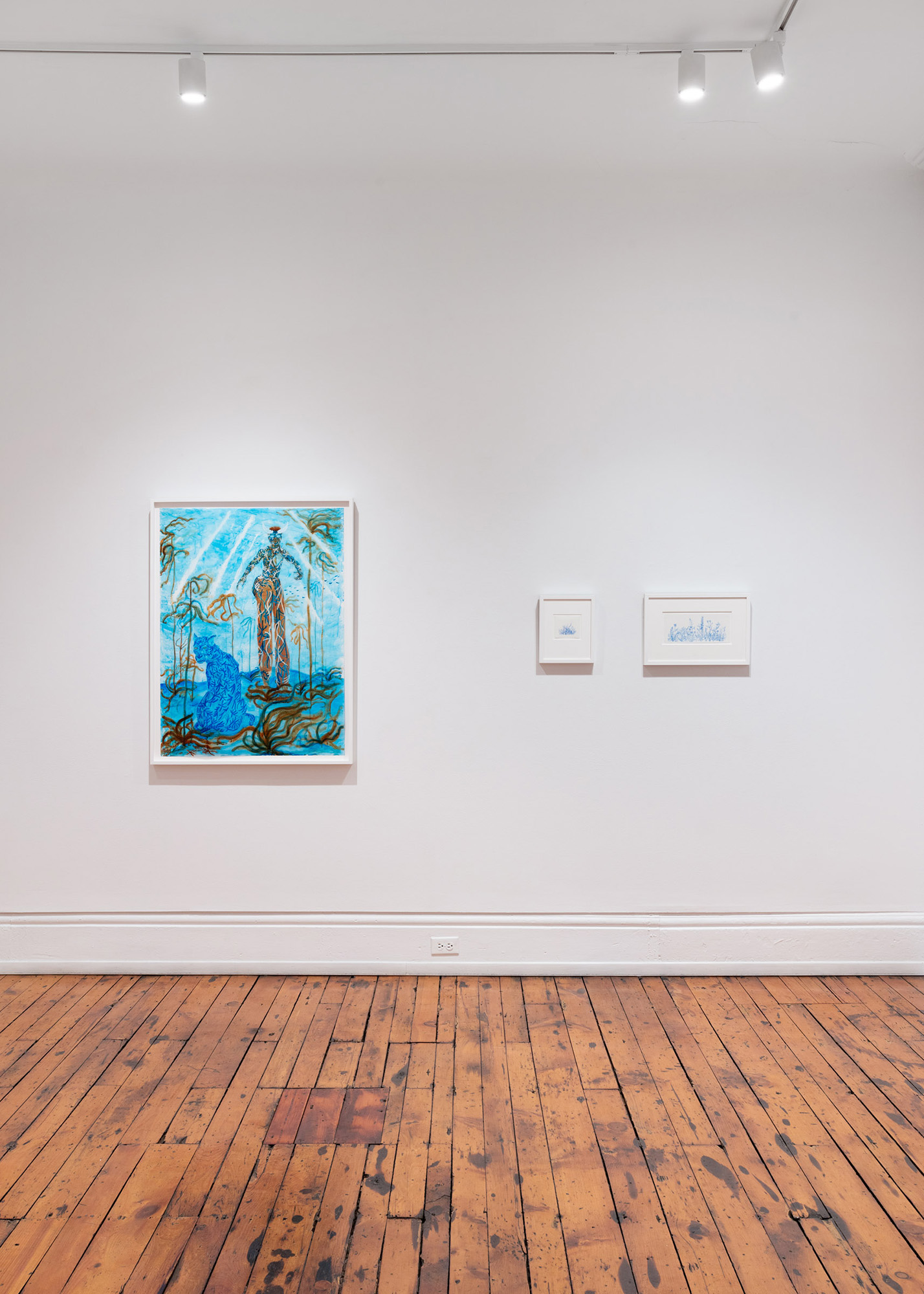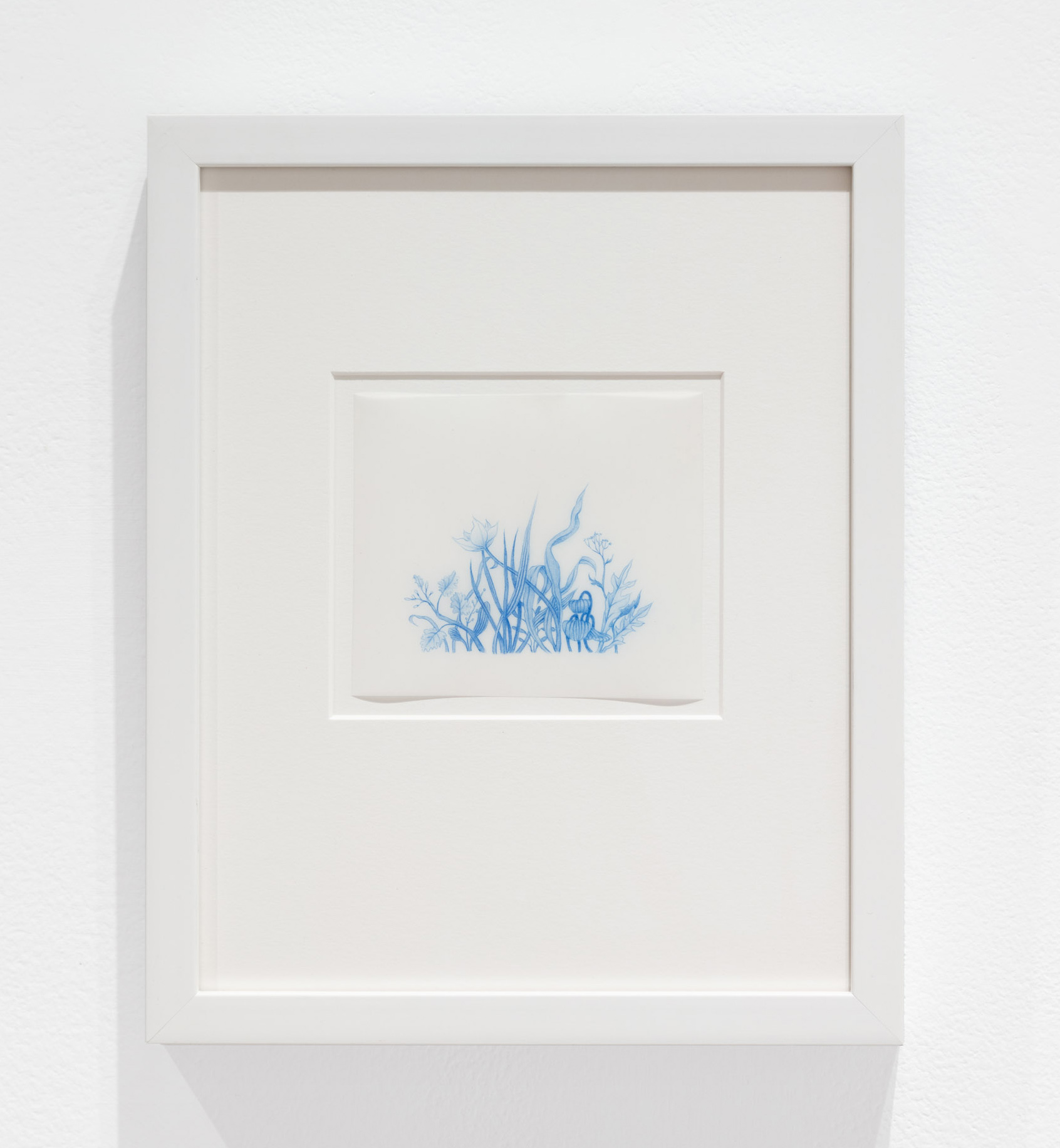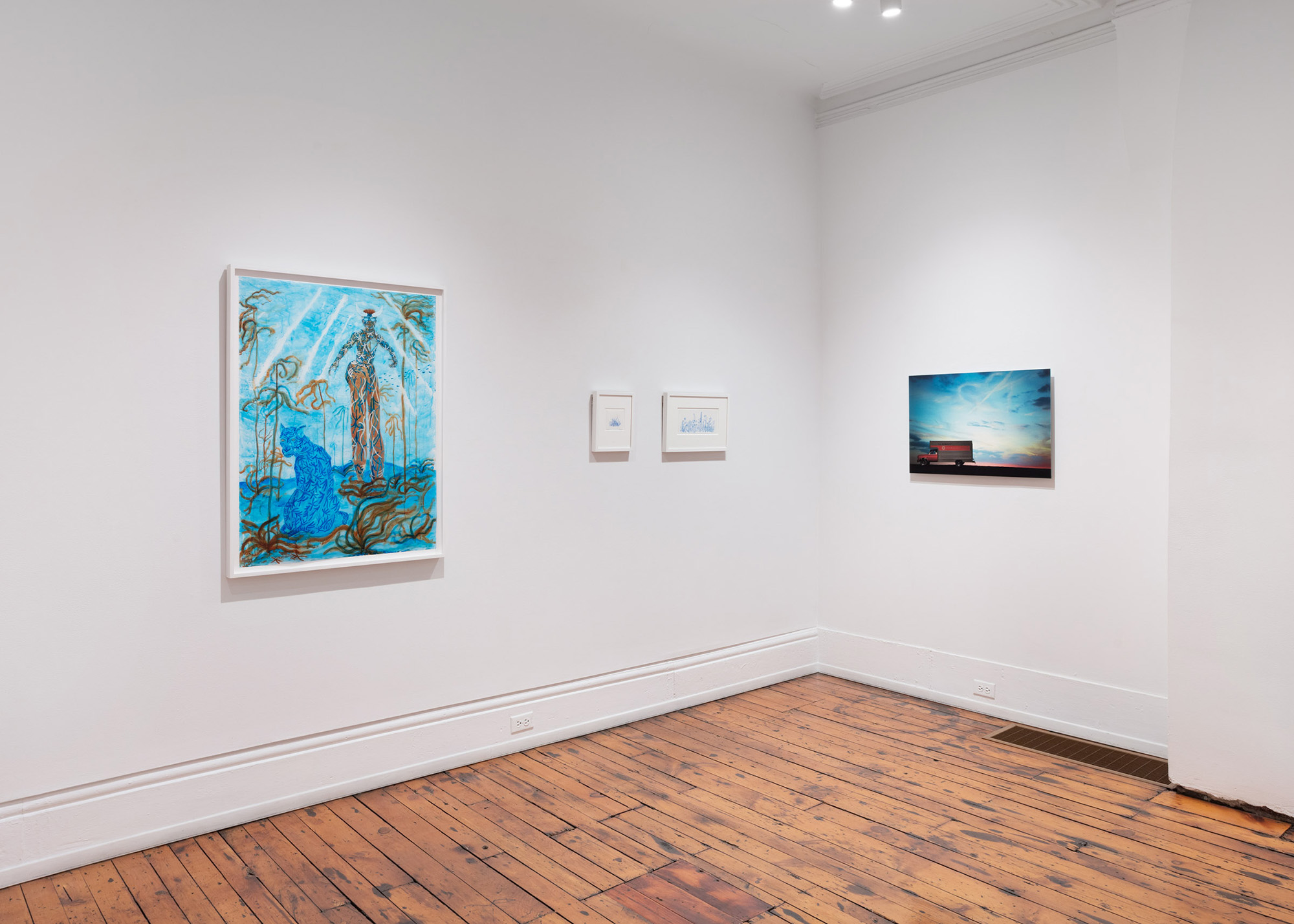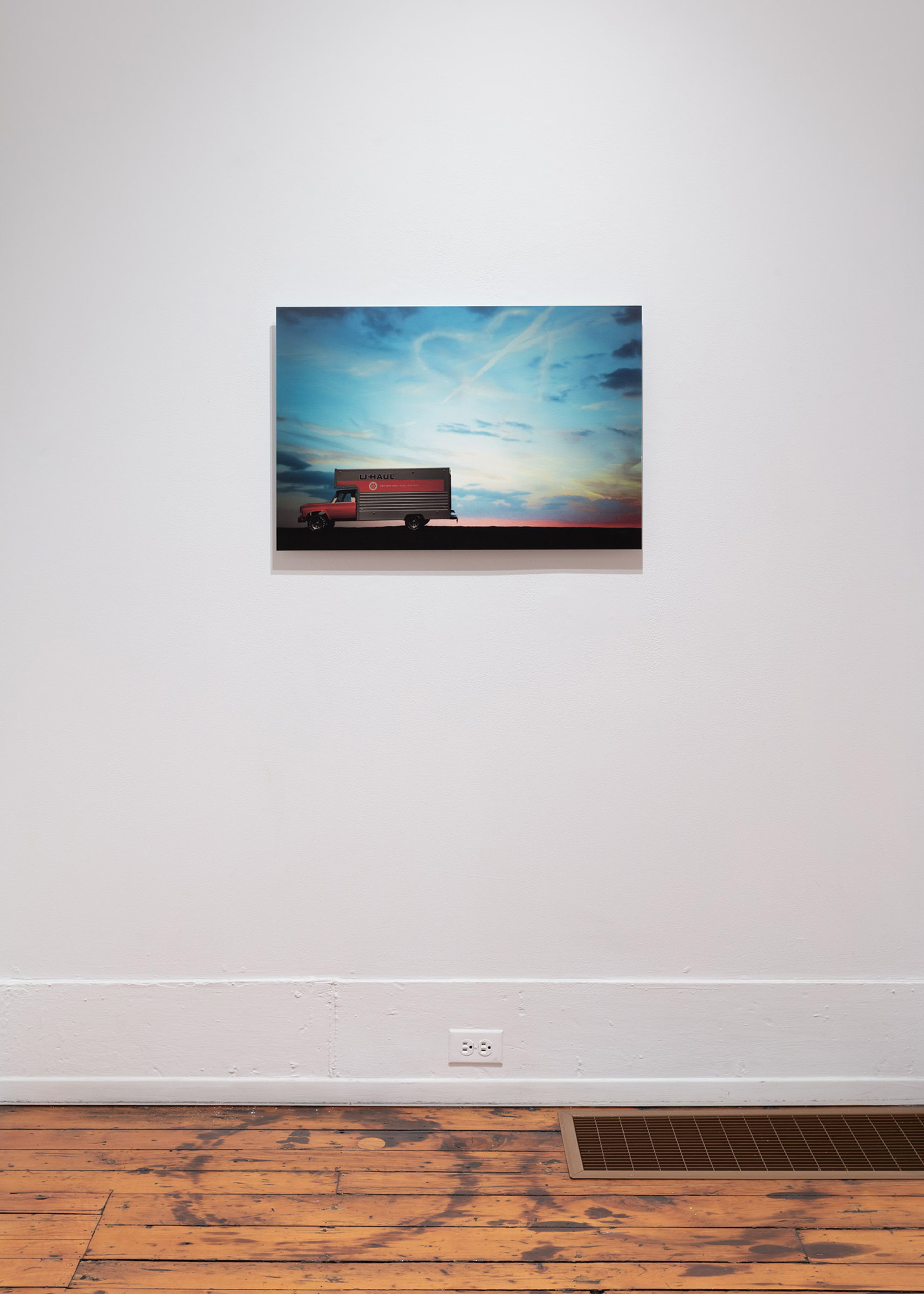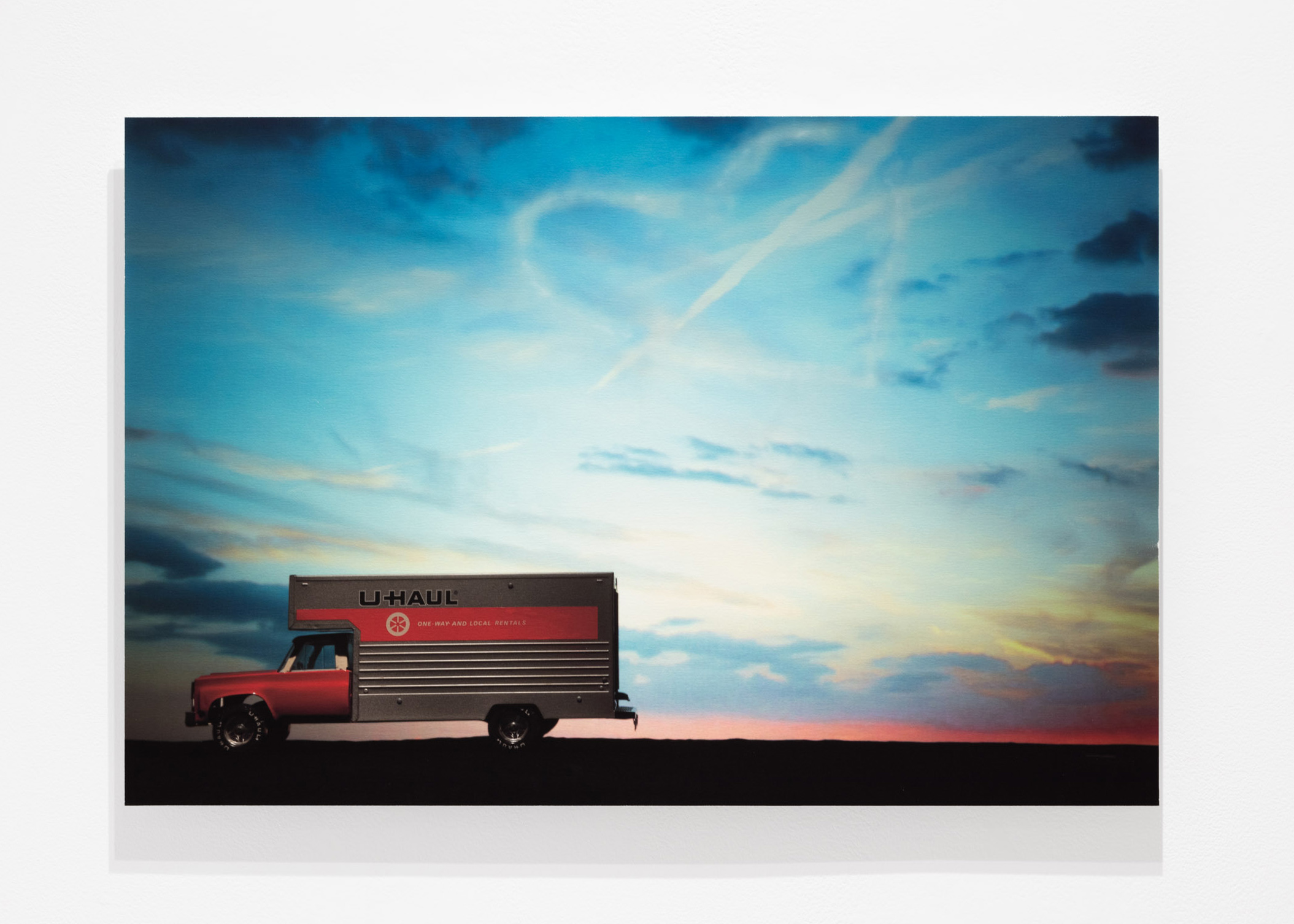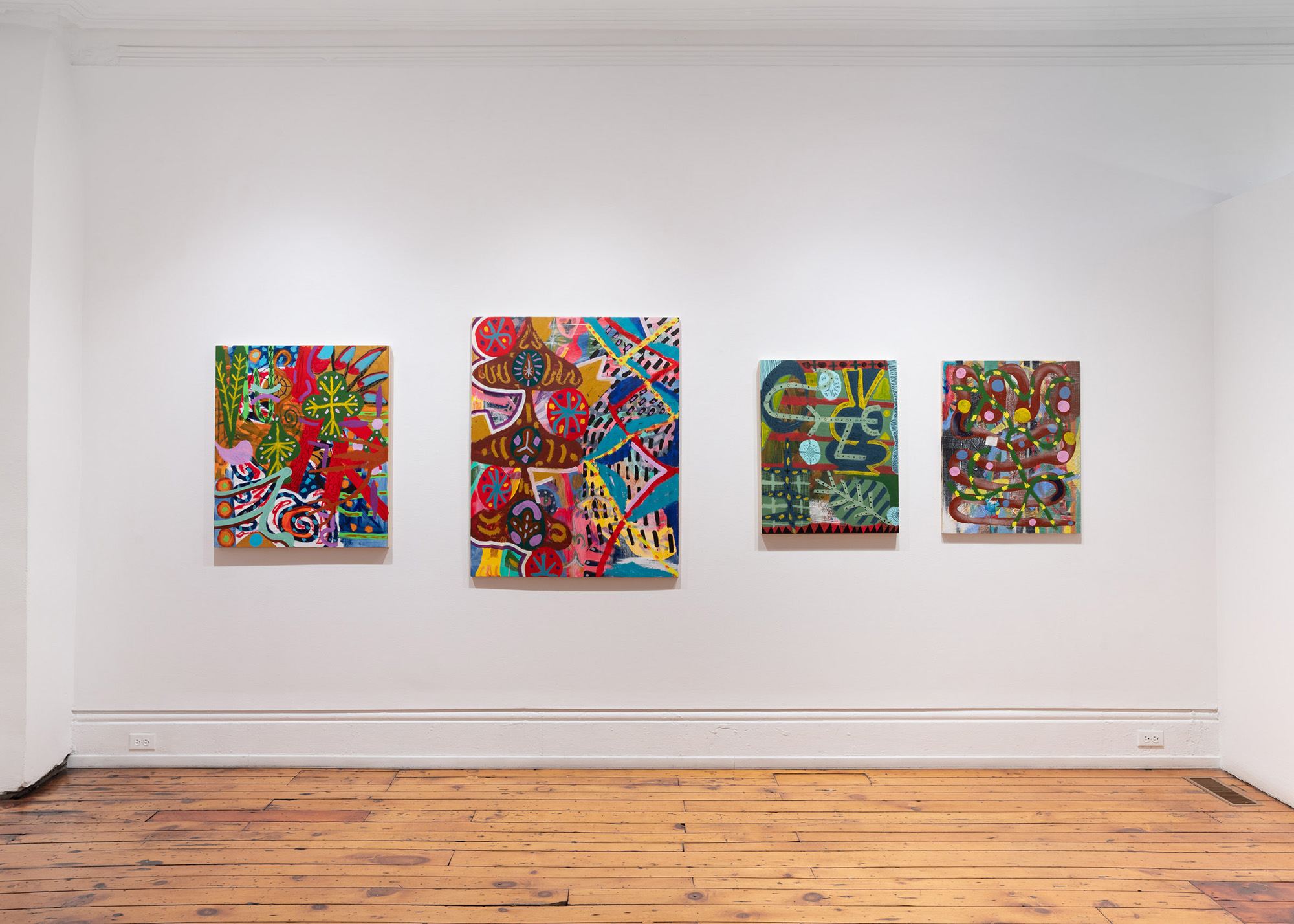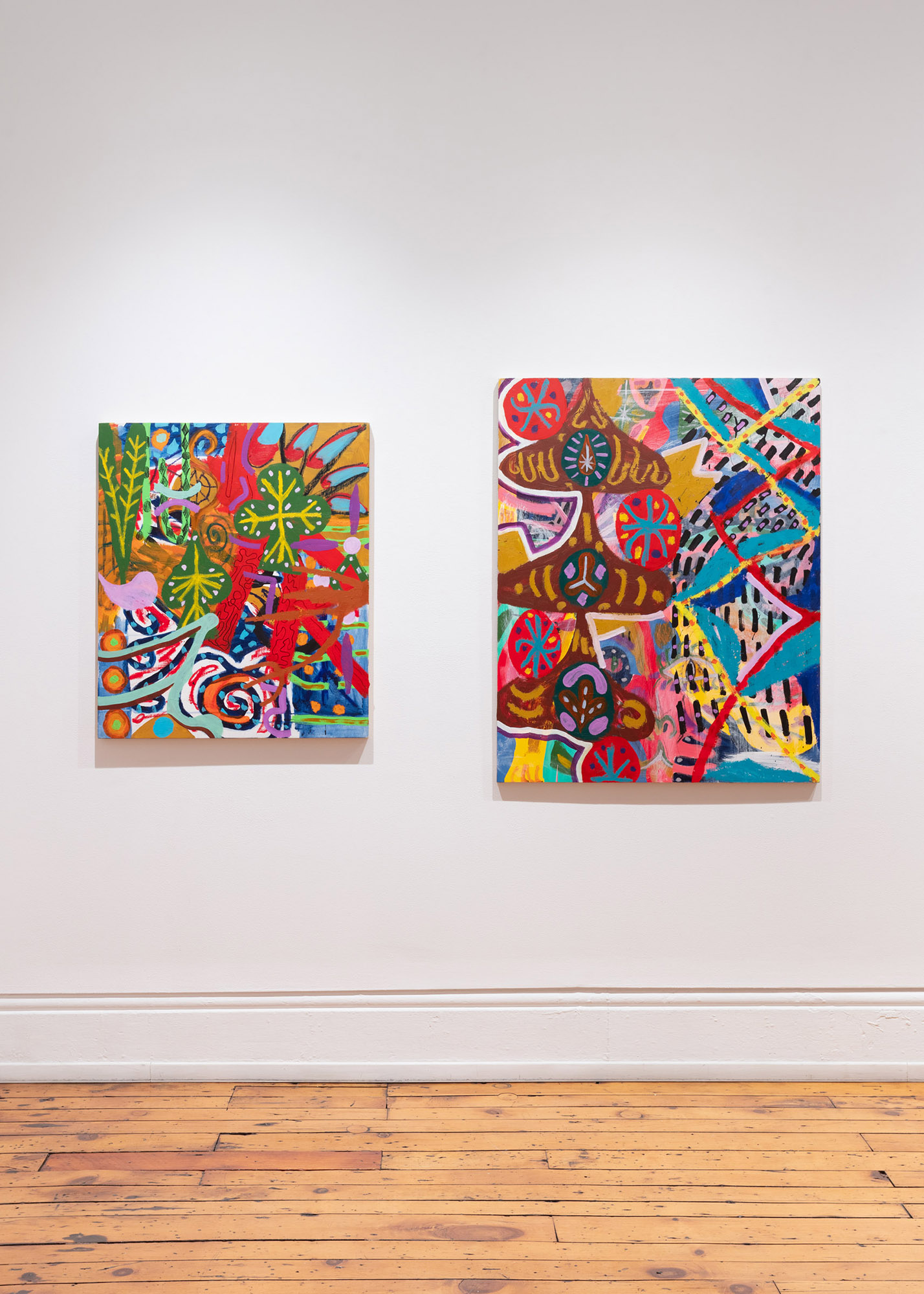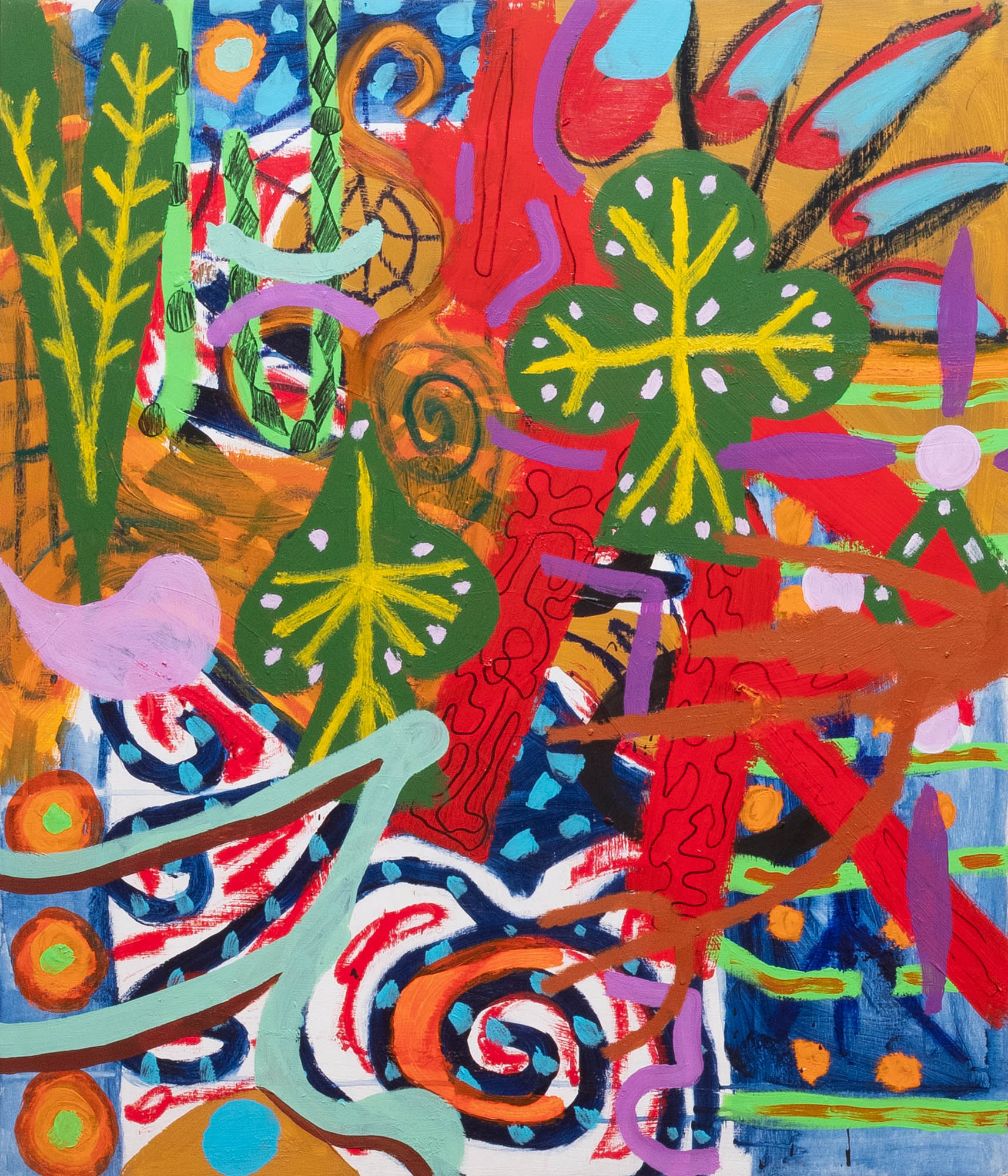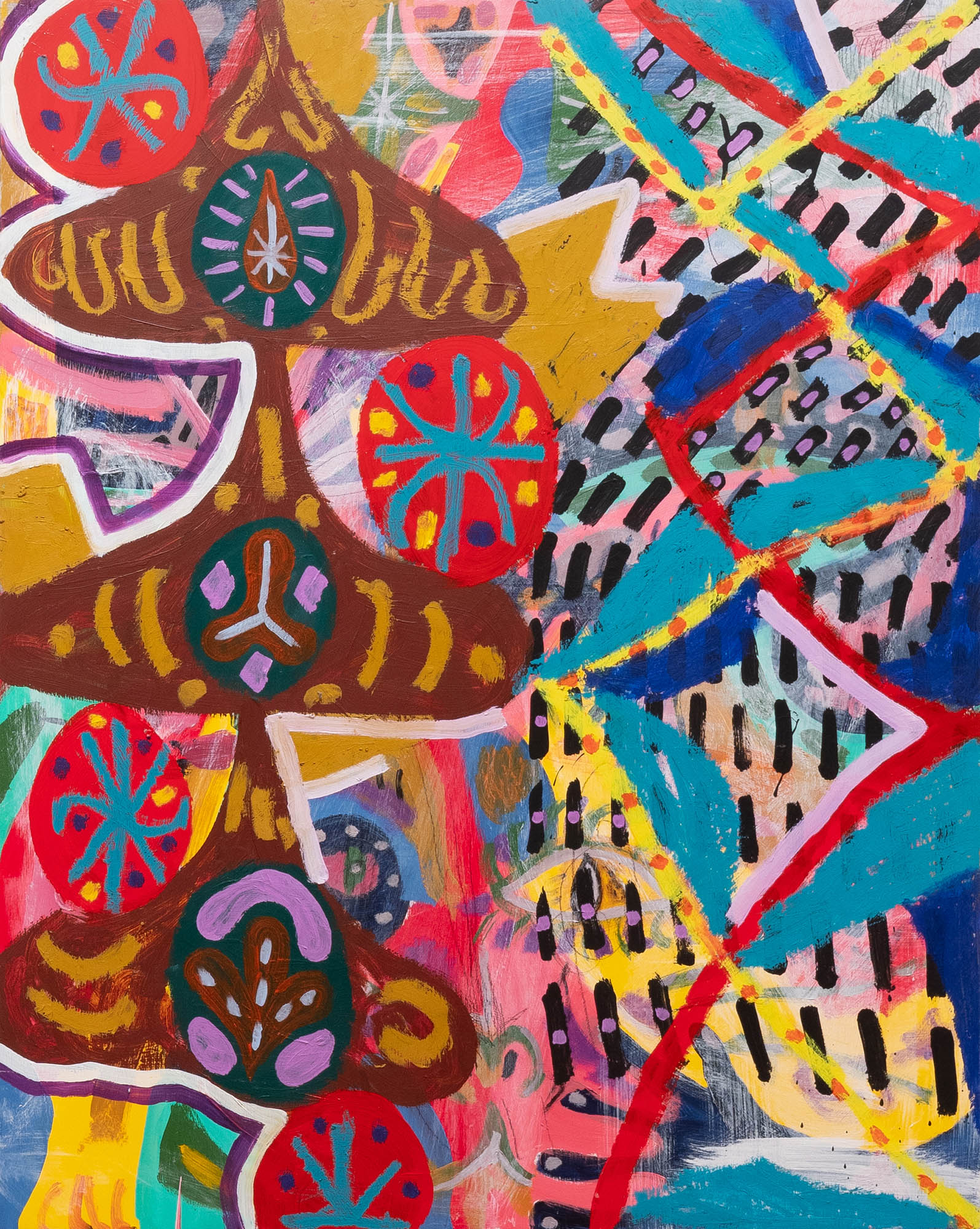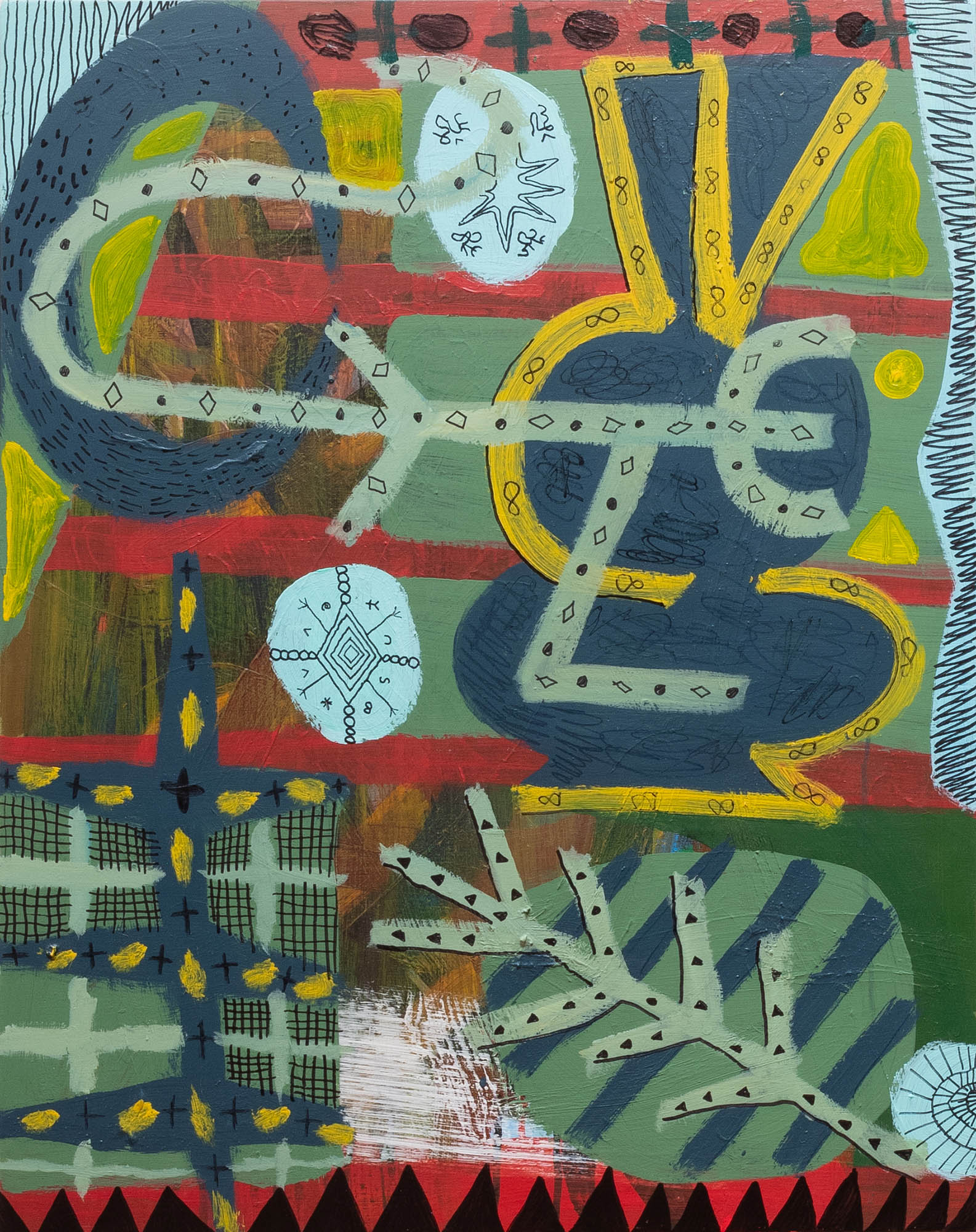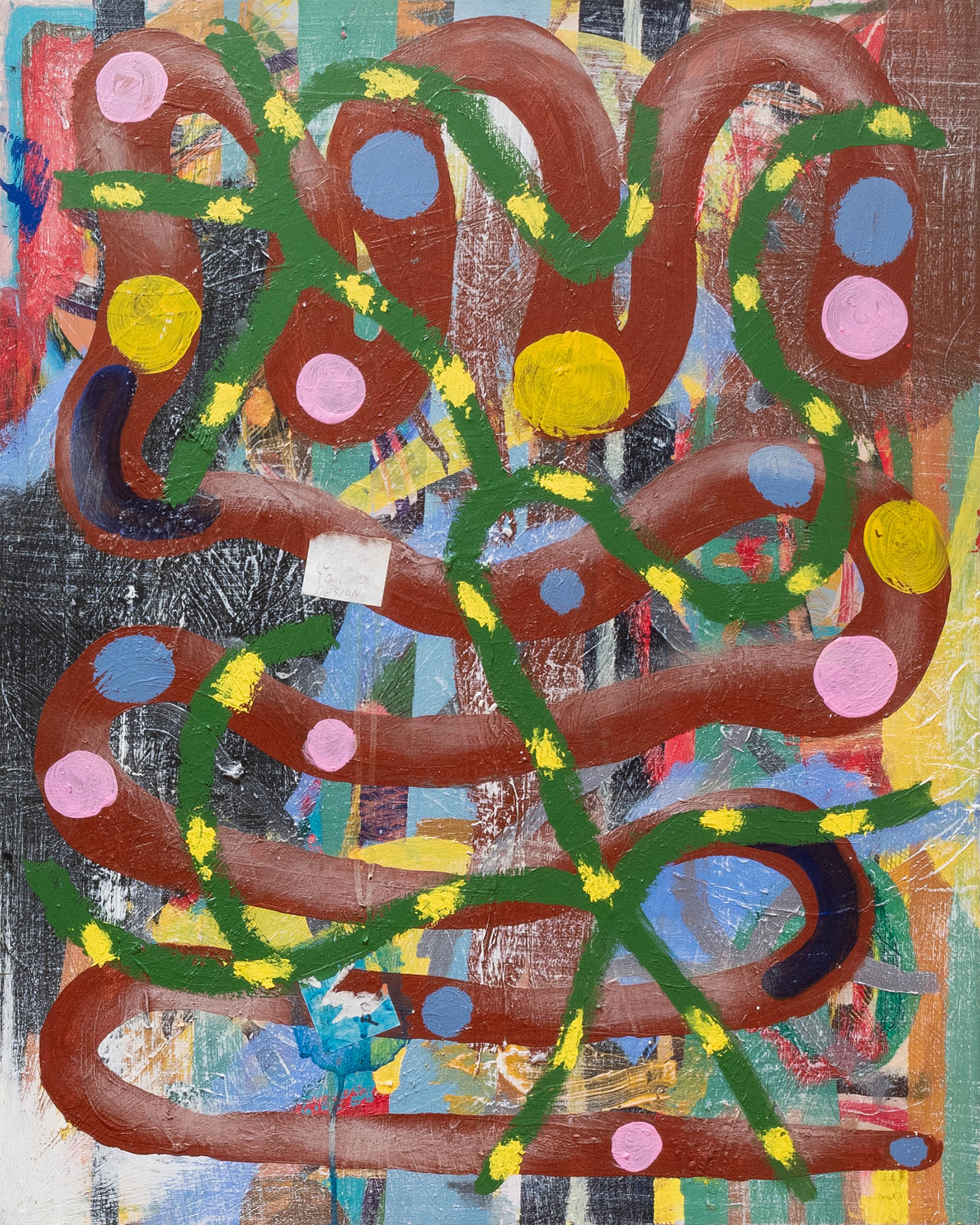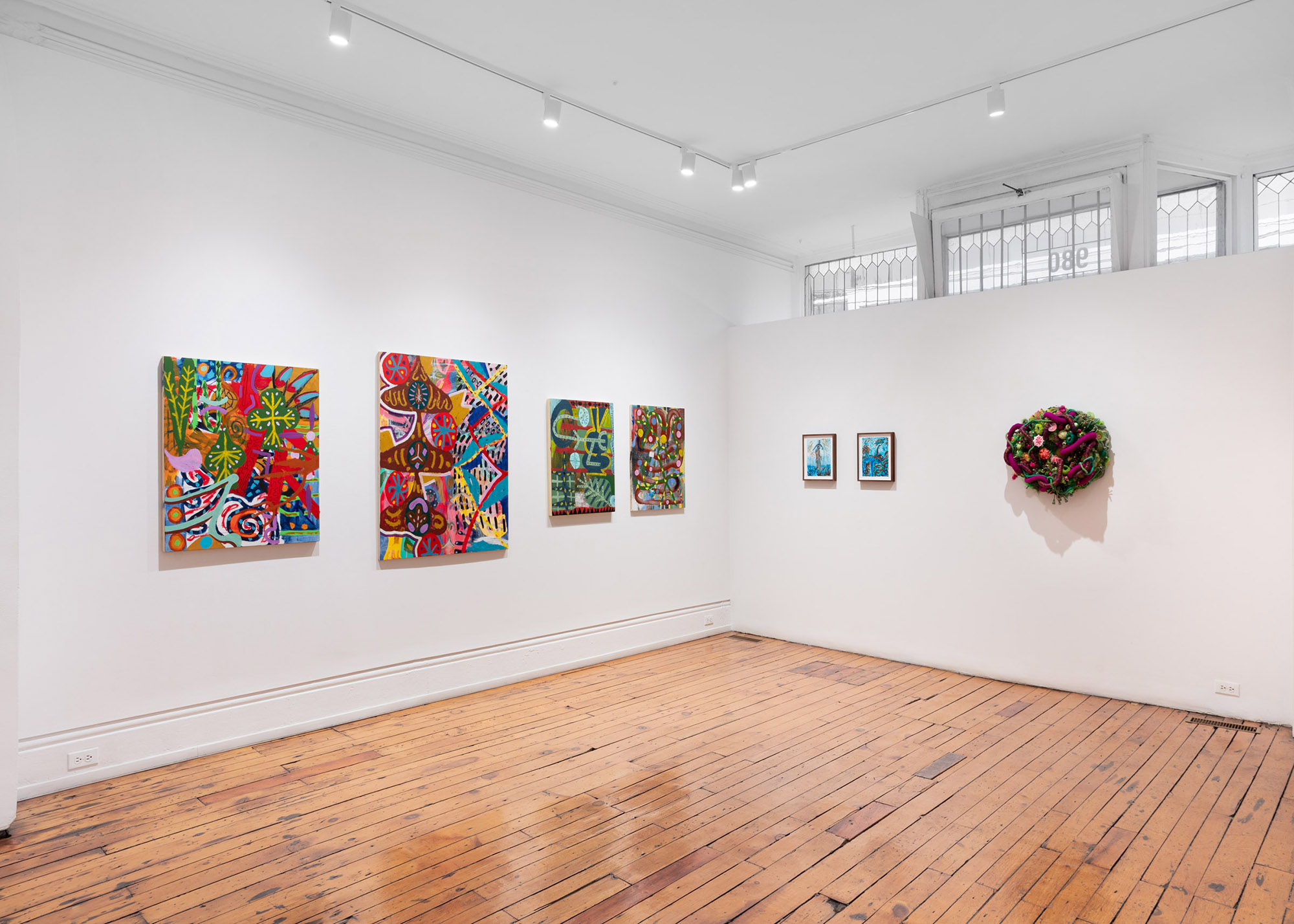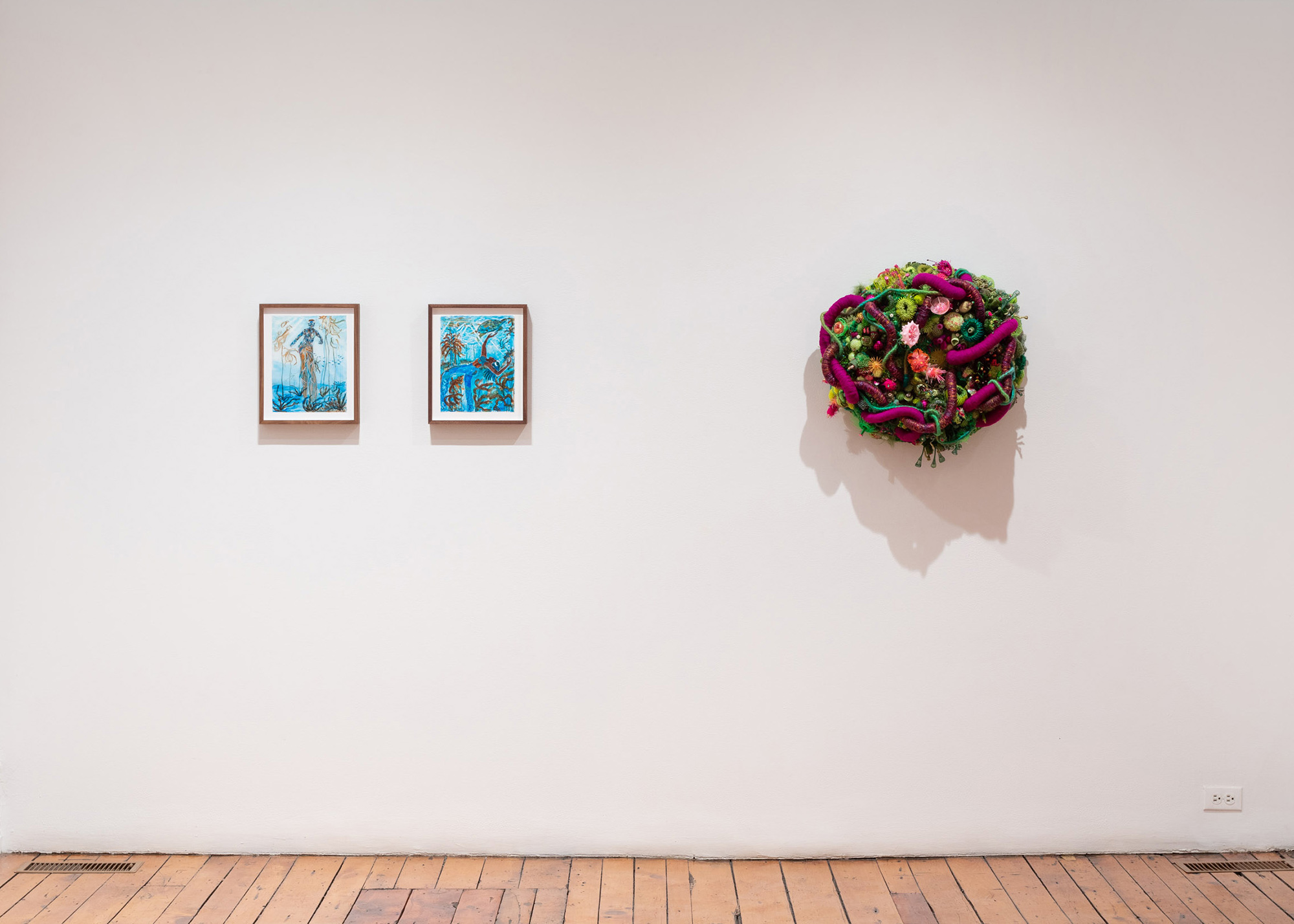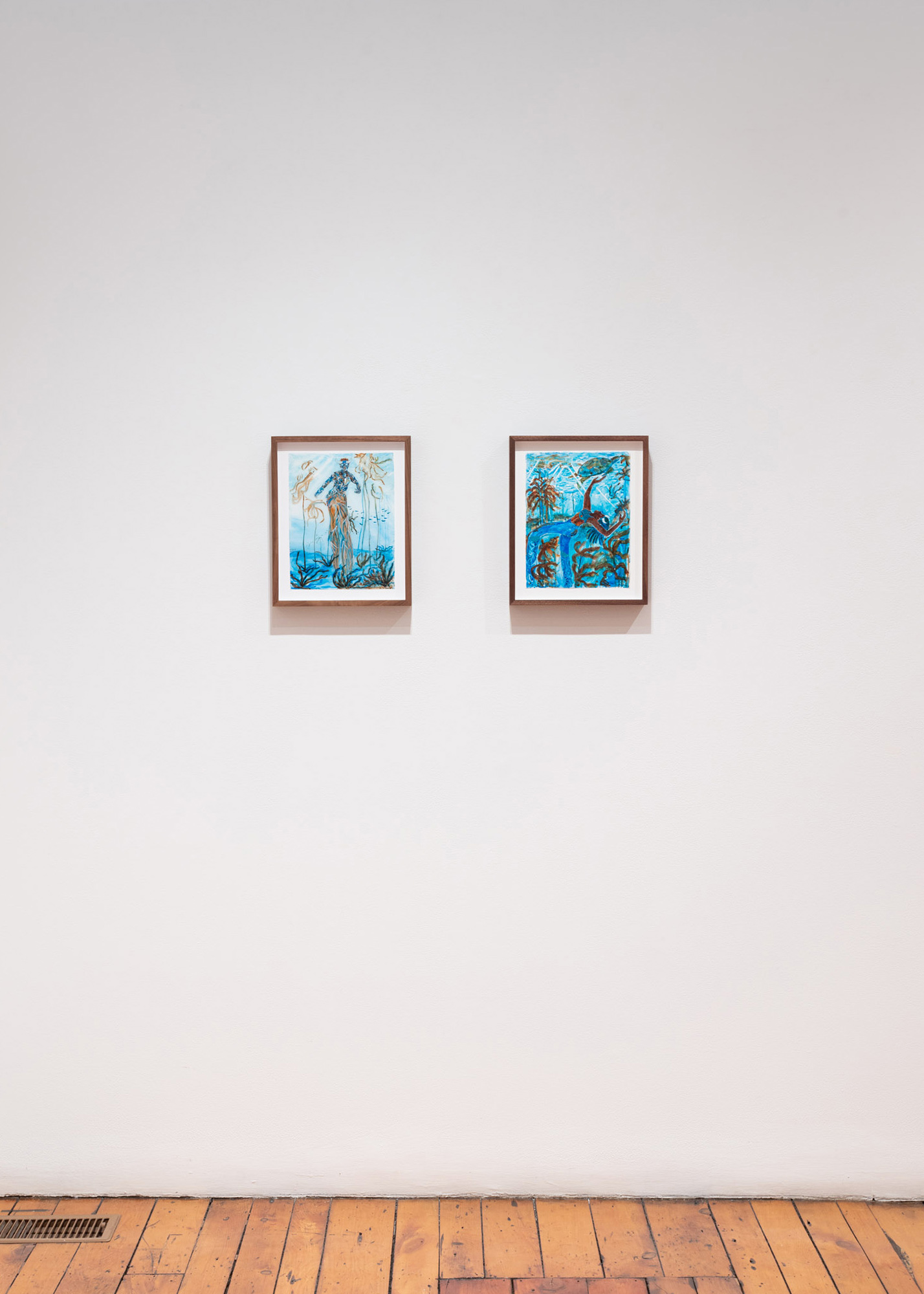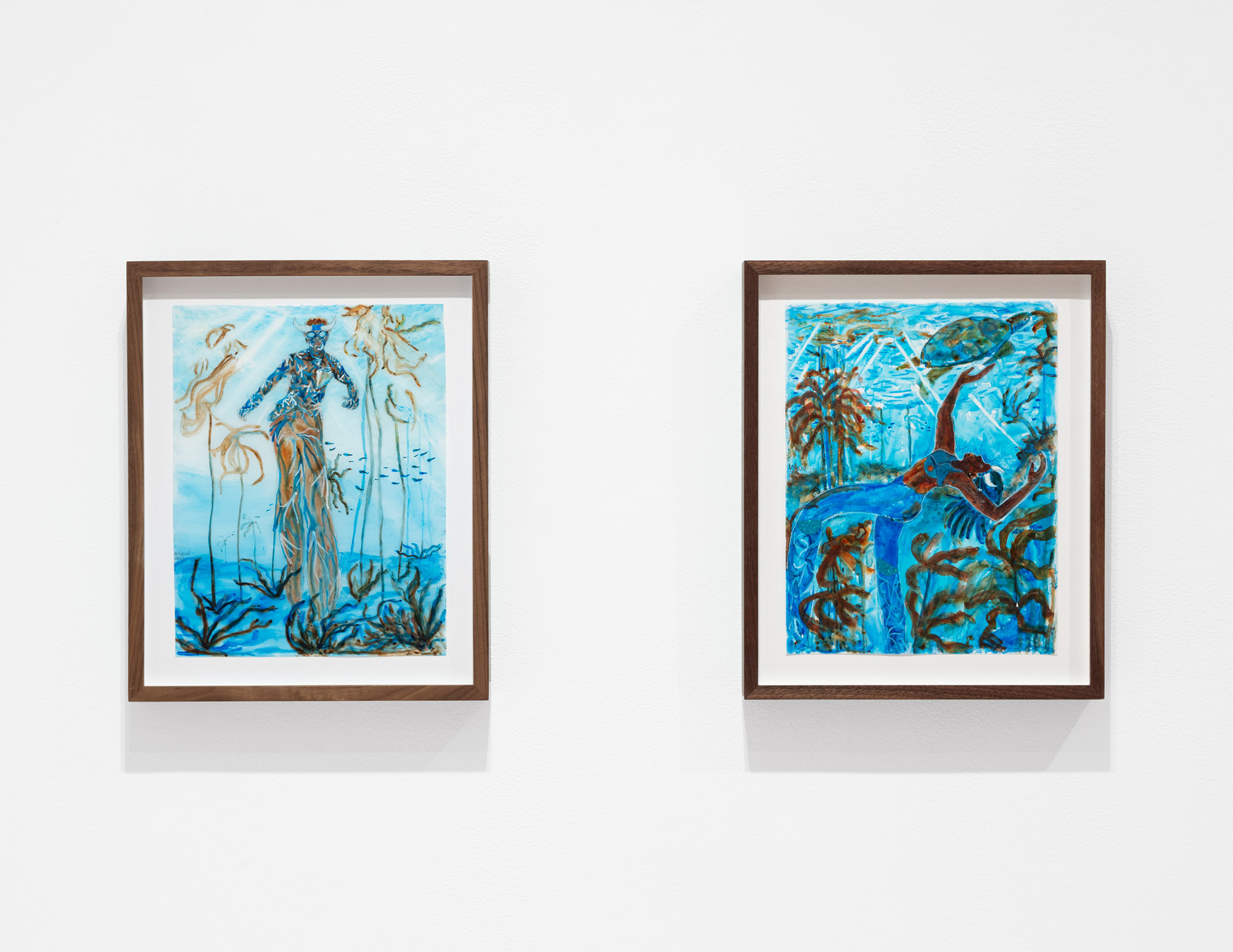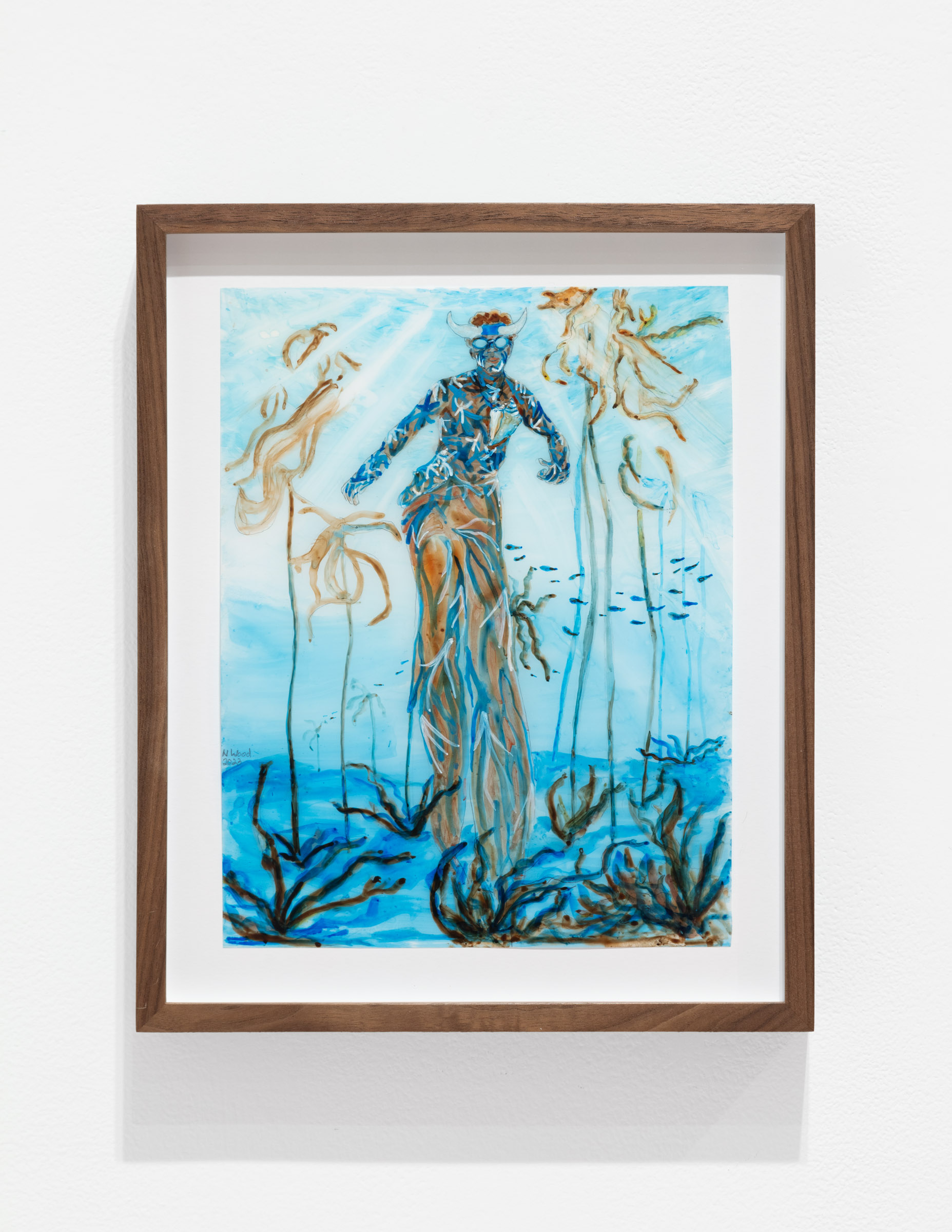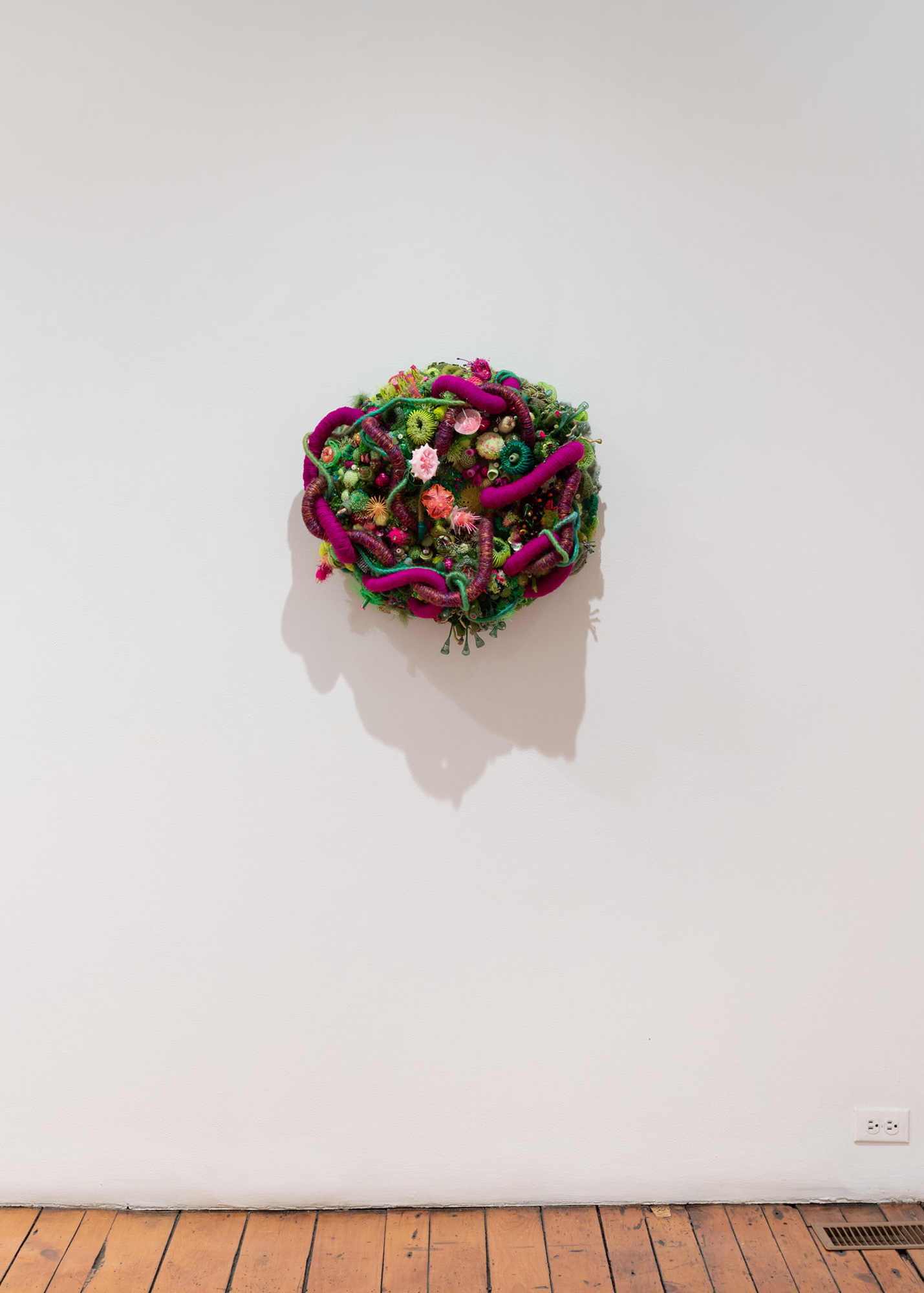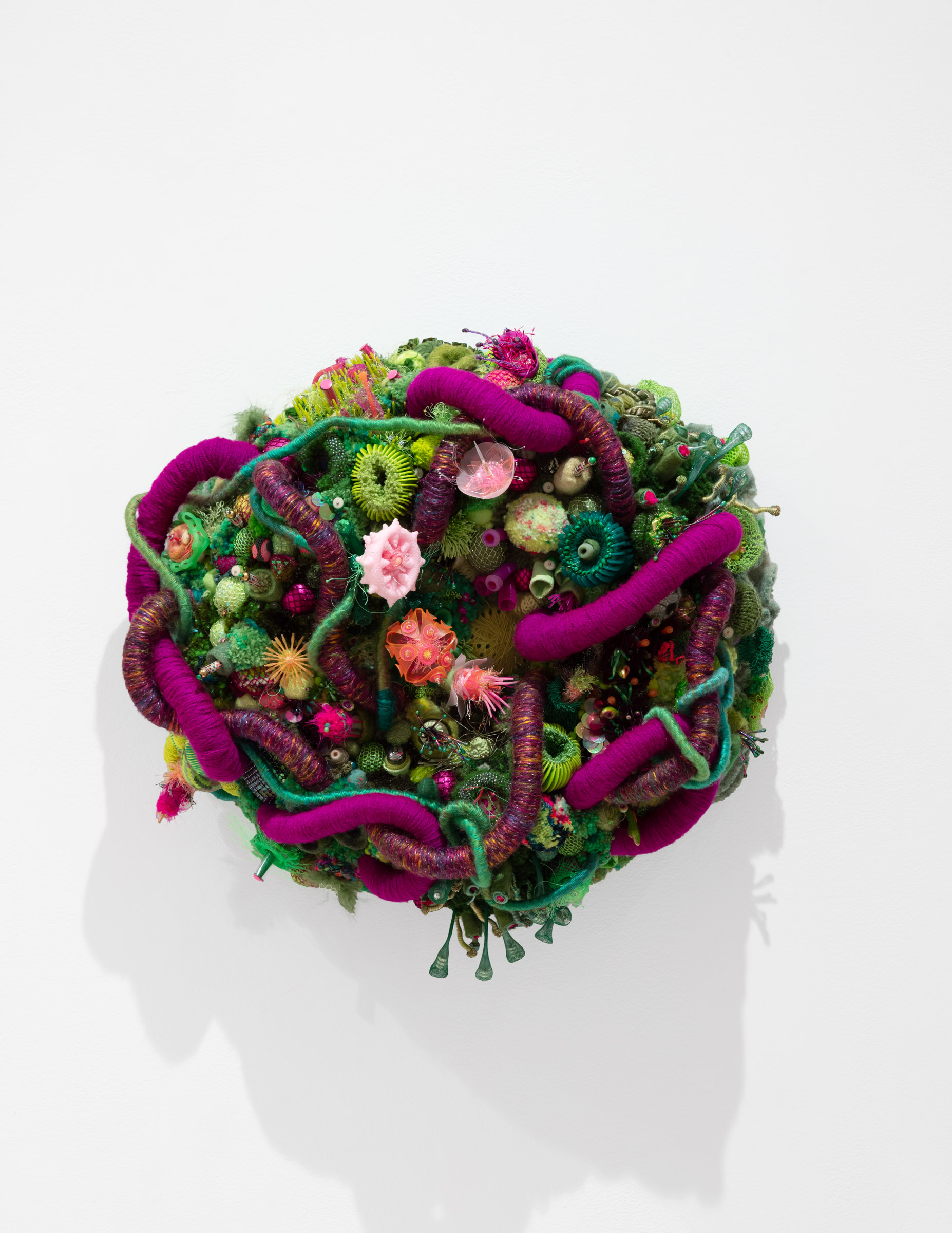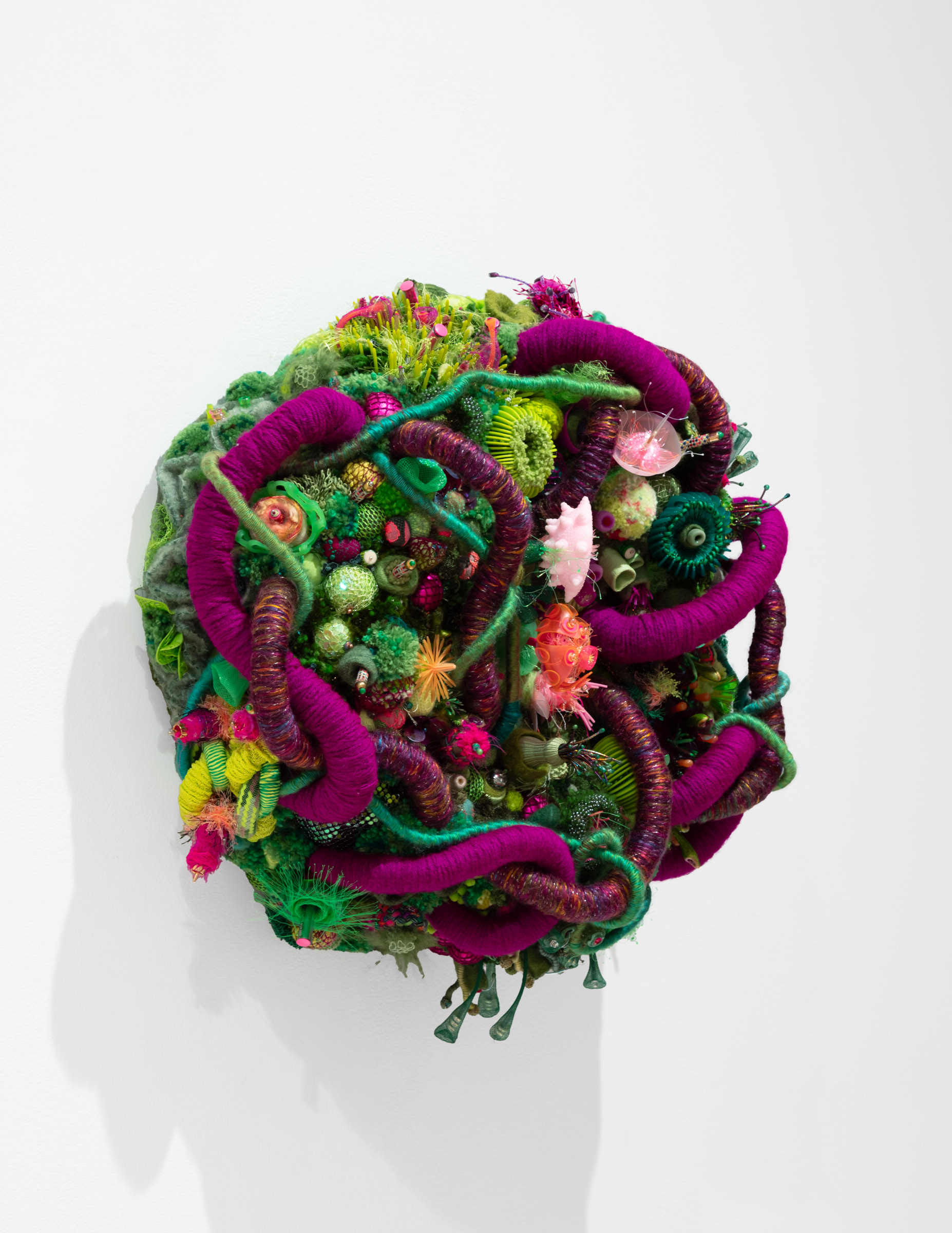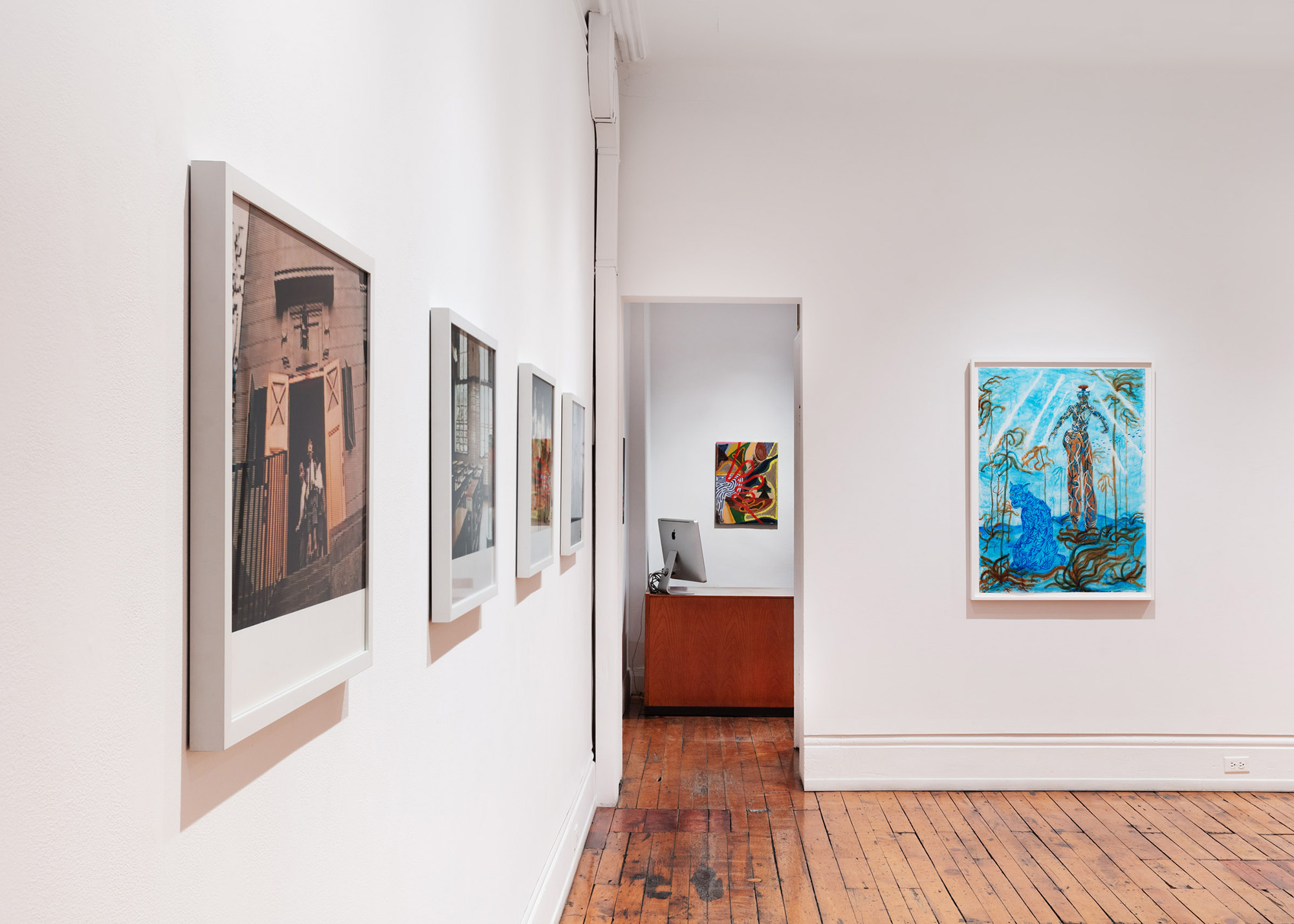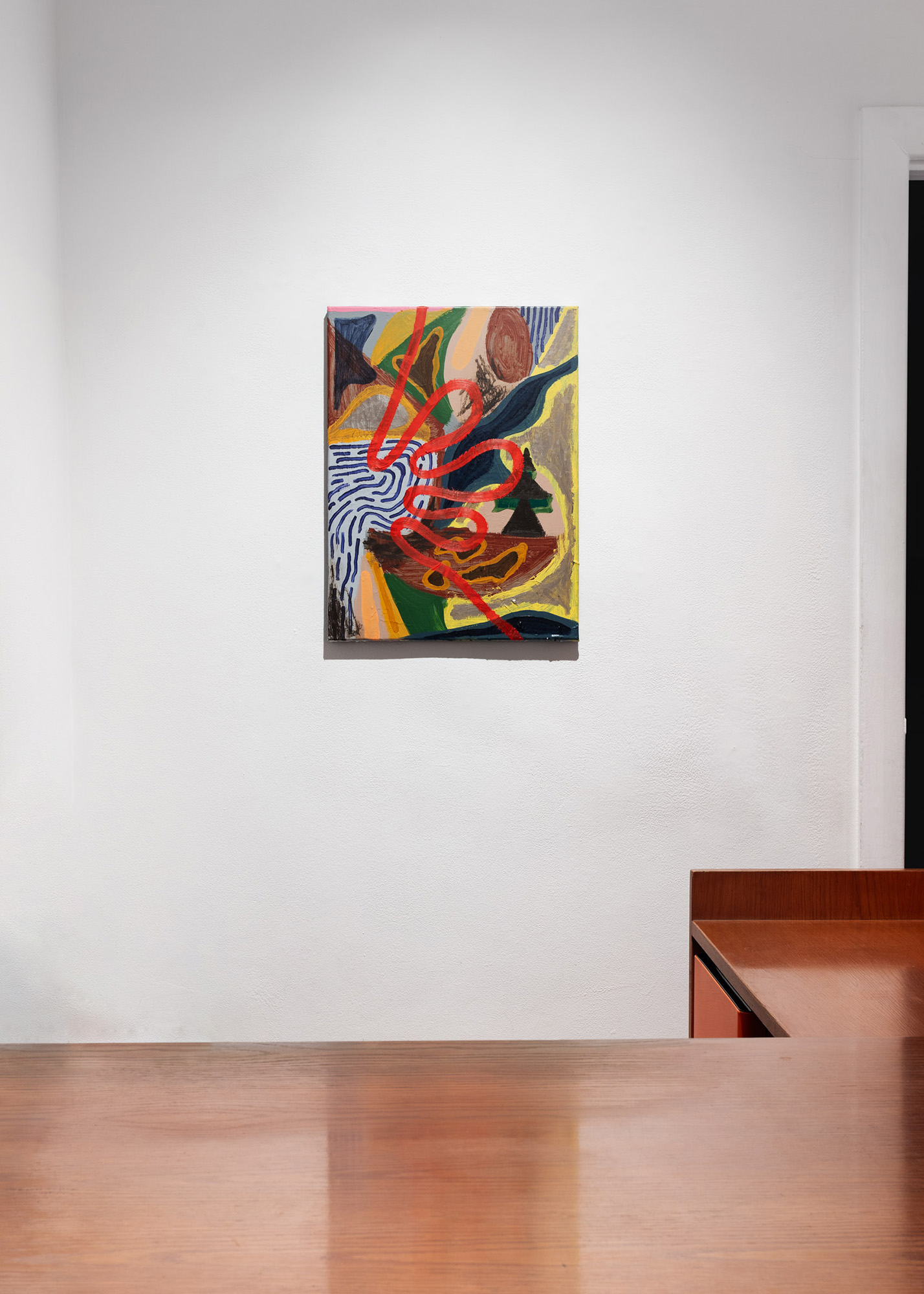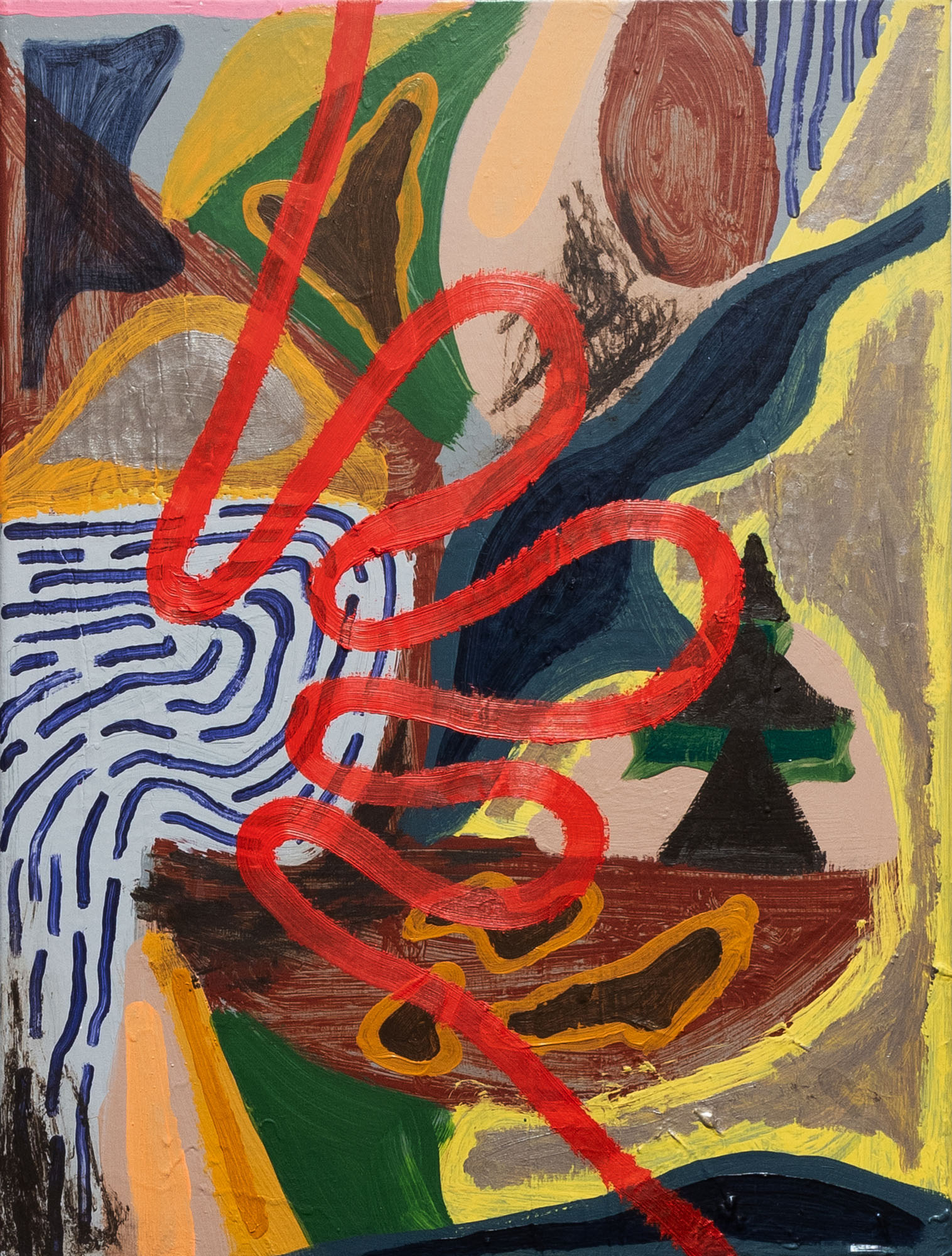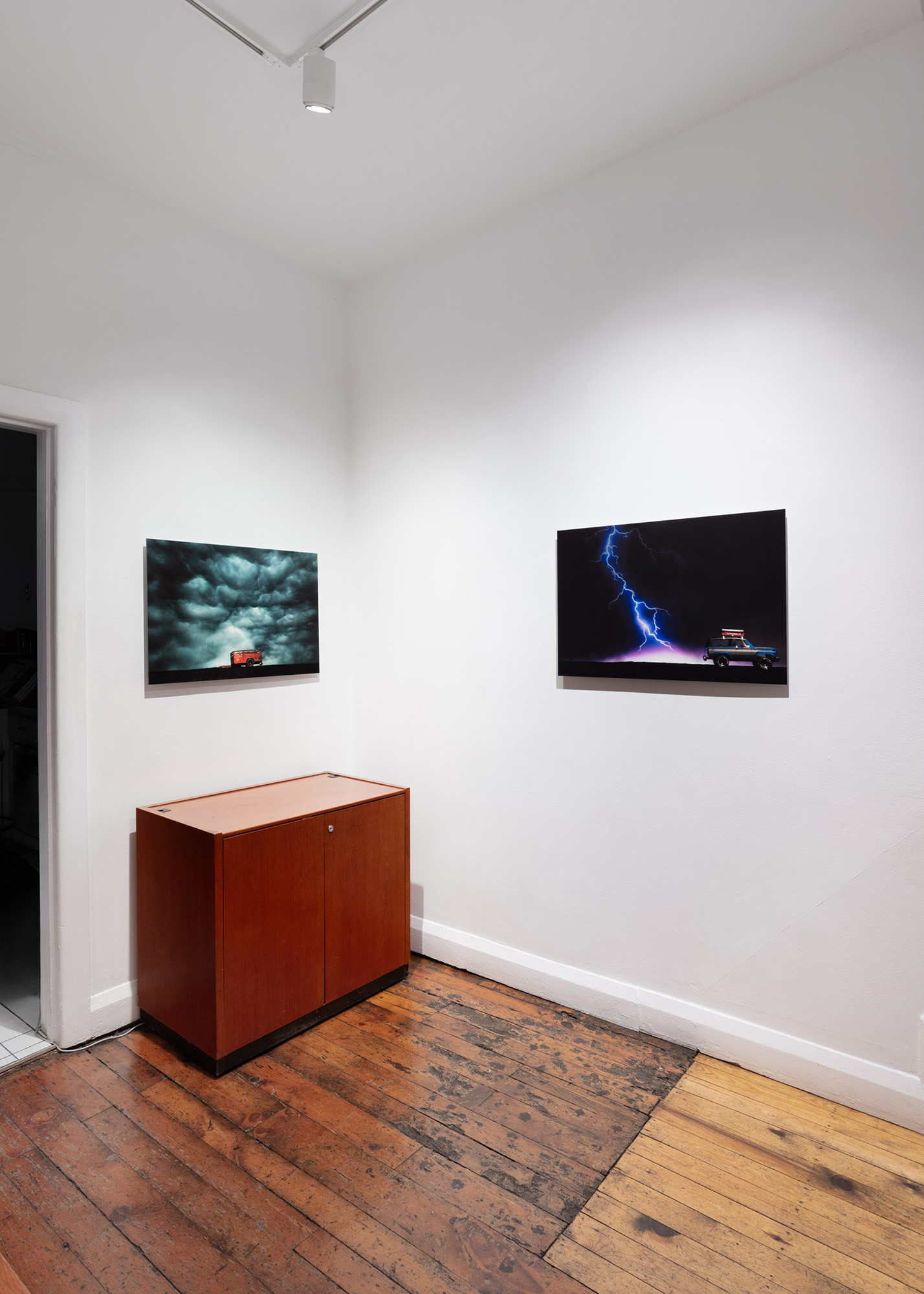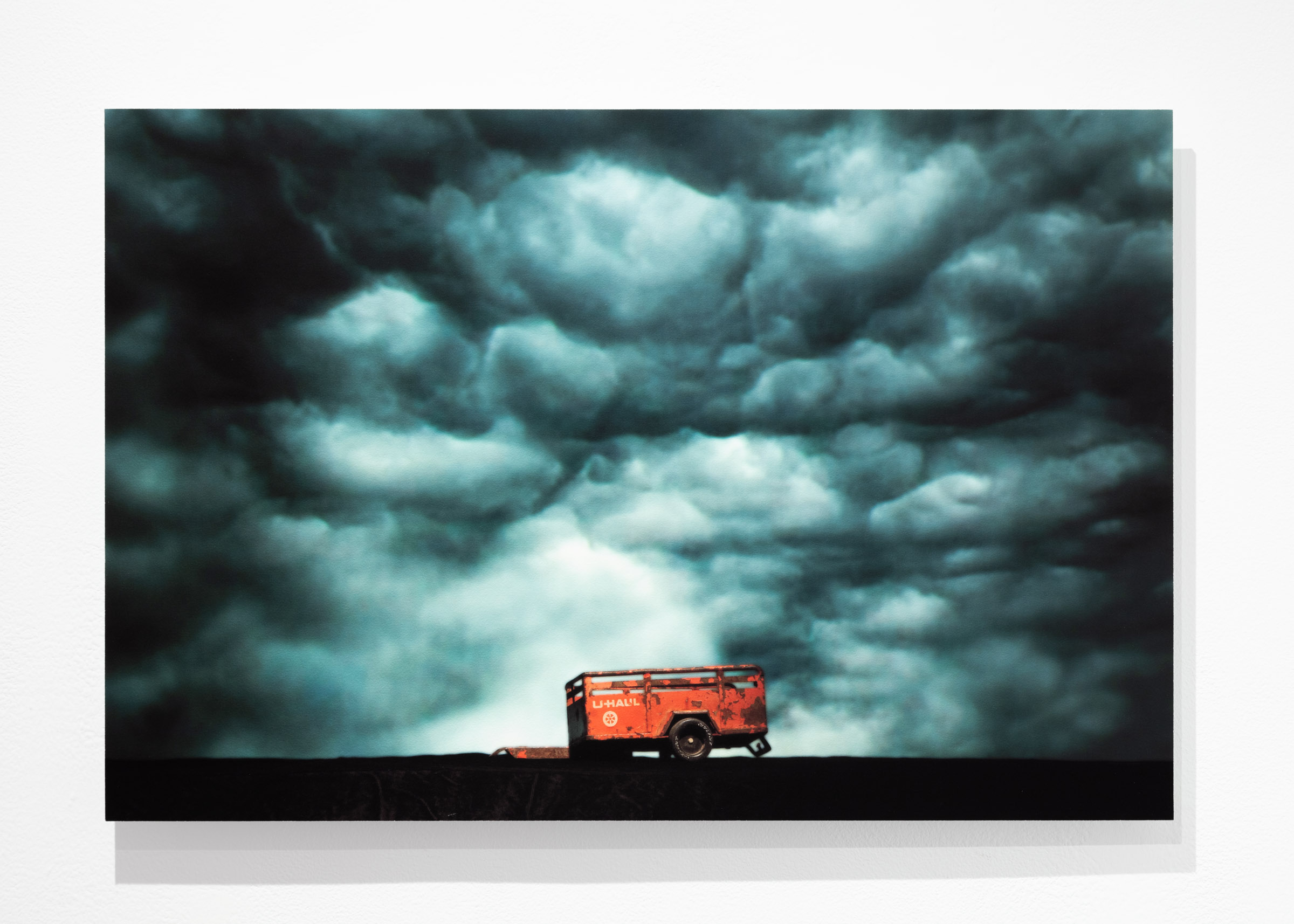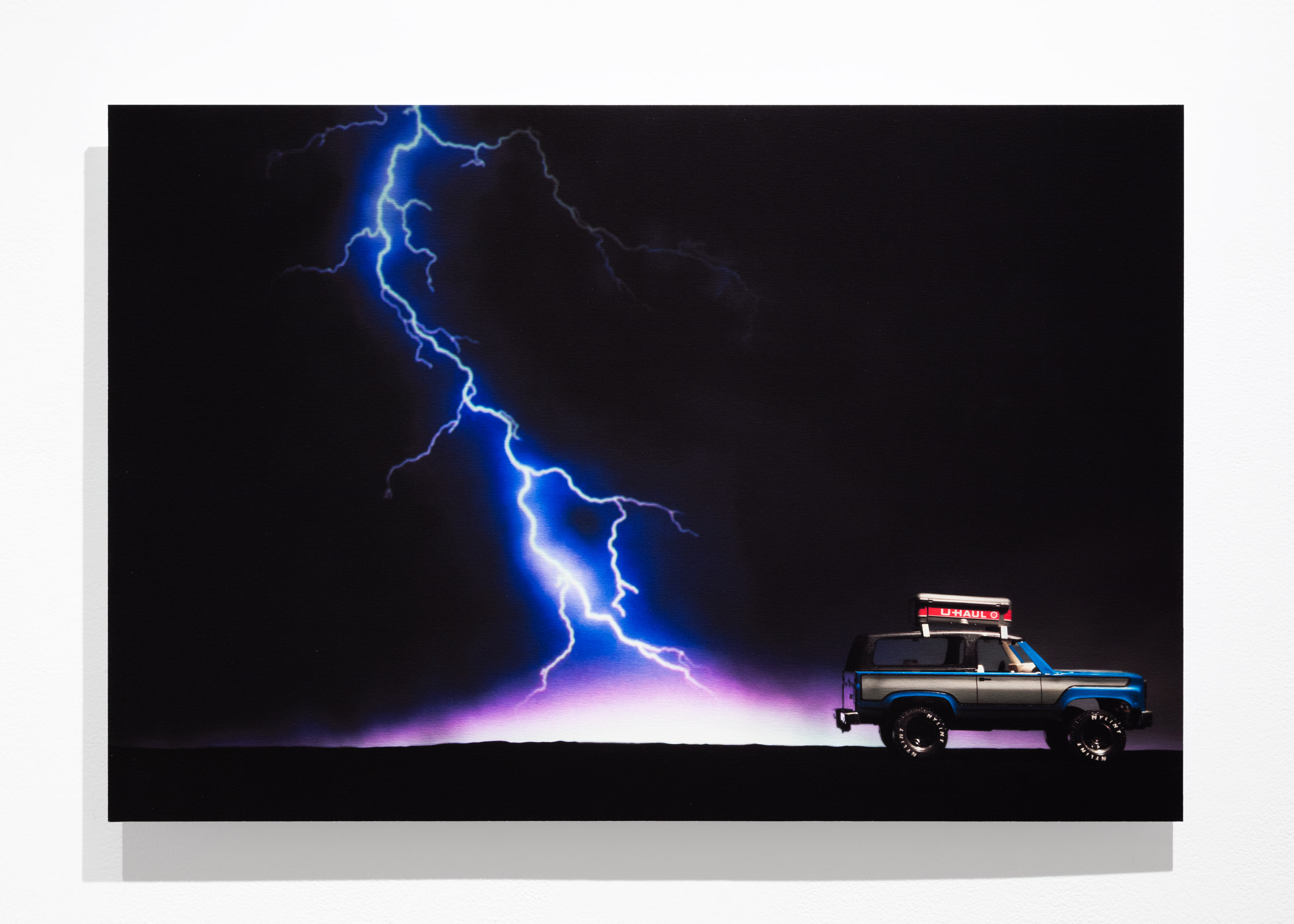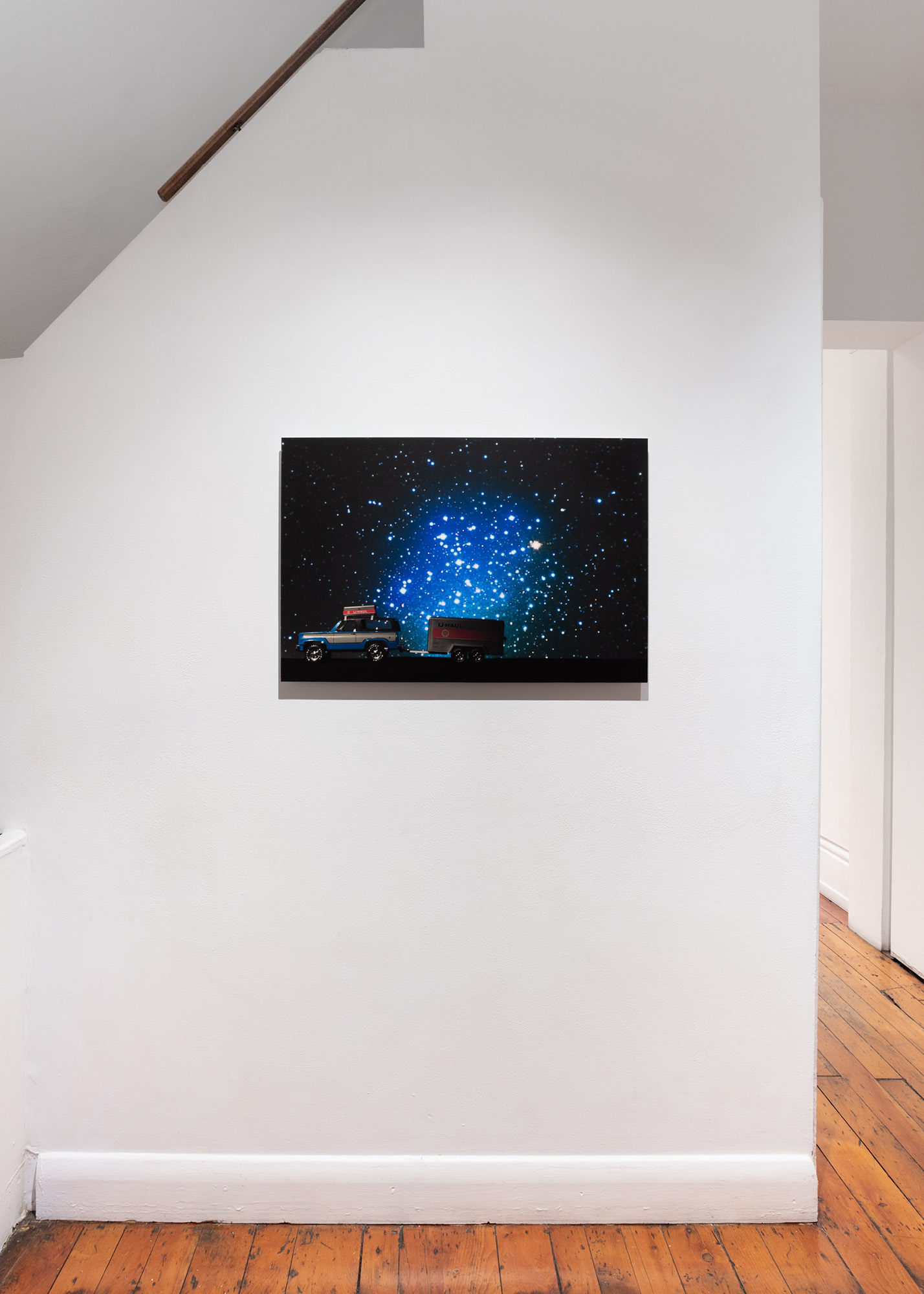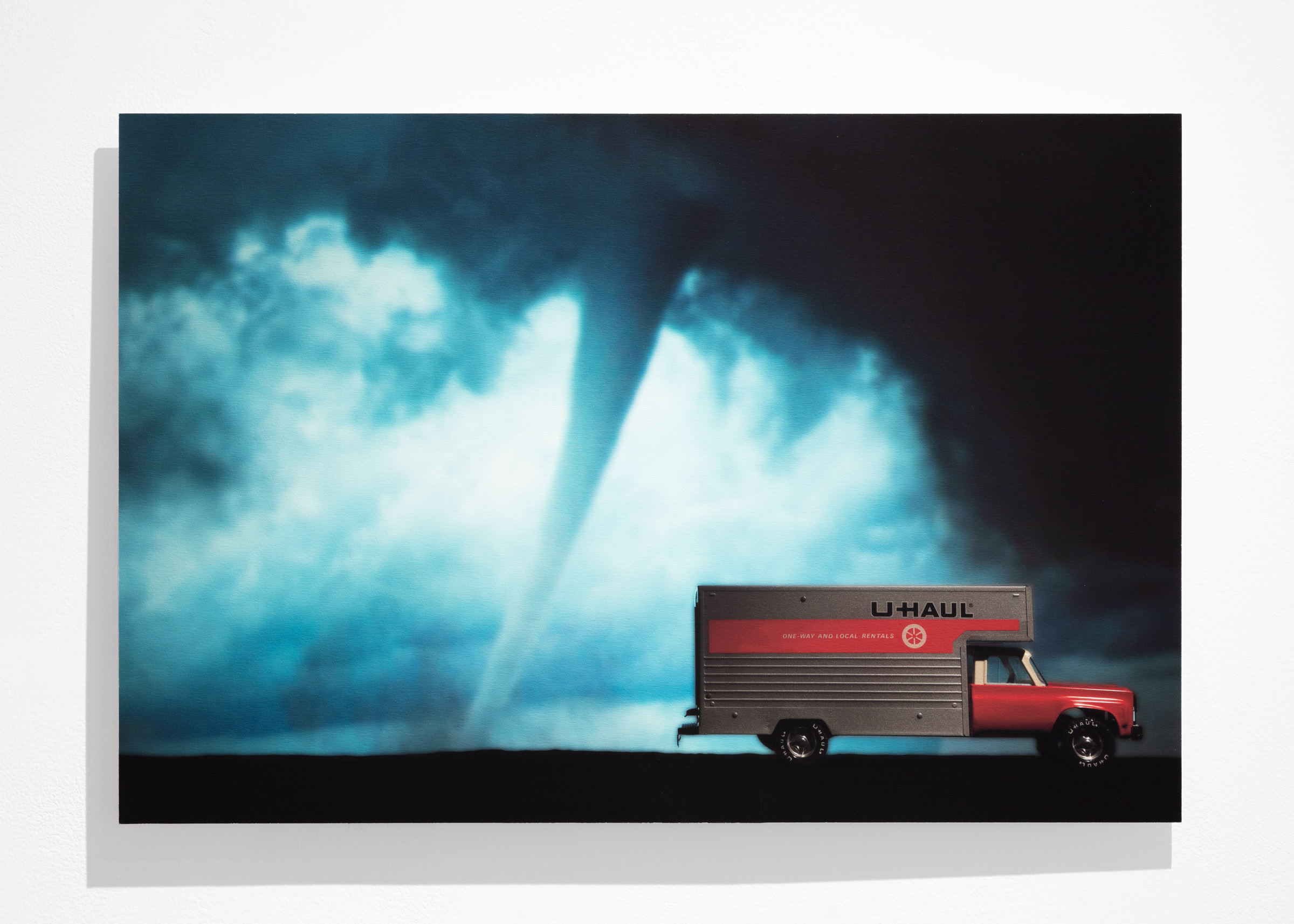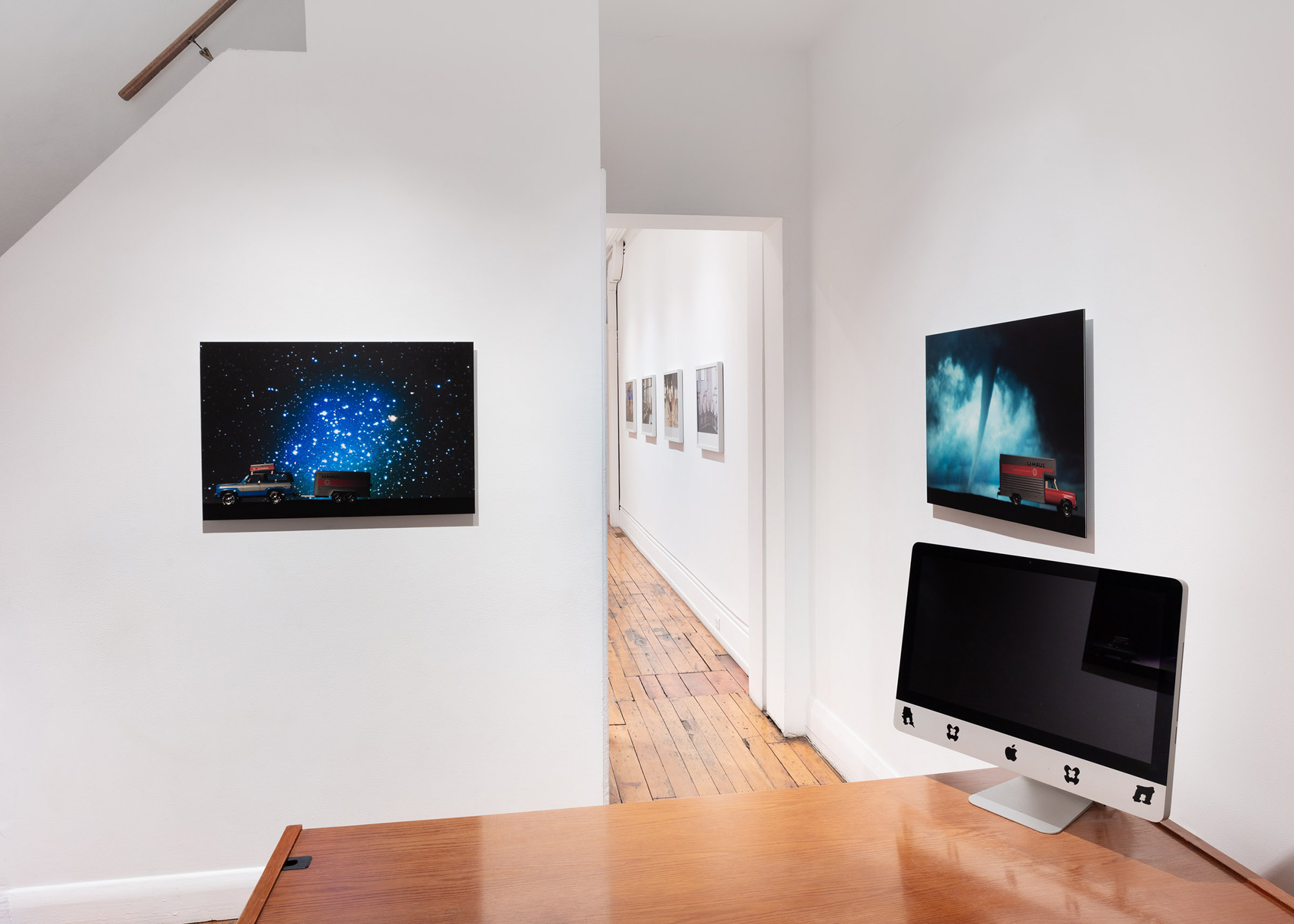Diasporia
Zavisha Chromicz, Estate of Wendy Coburn, Patrick Cruz, Zachari Logan, Ho Tam, Natalie Wood
May 17 - June 22, 2024
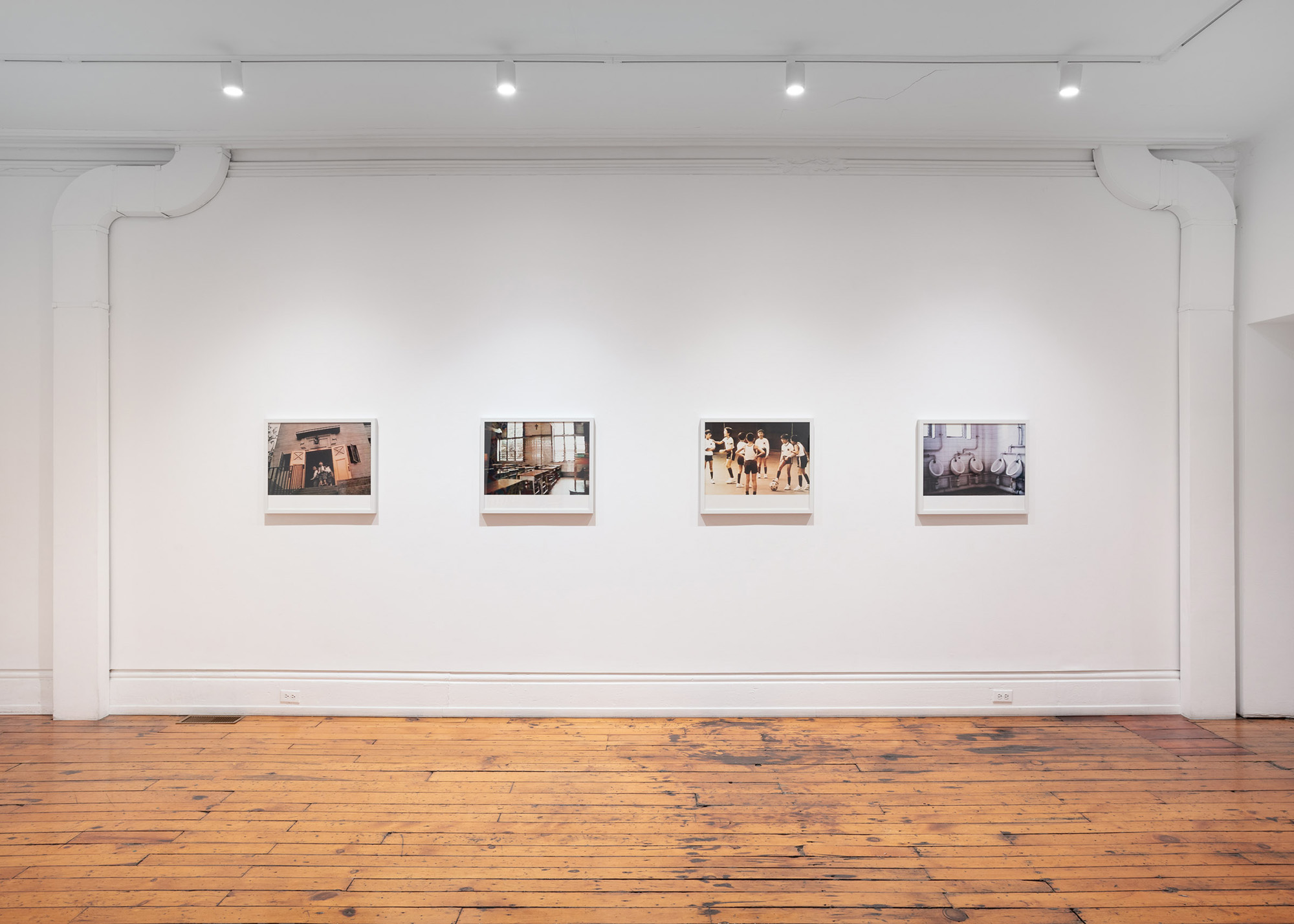
Diasporia is a group exhibition exploring a (head) space of margins and mobilities, both queer and racial, and some strategies for survival as found in the origin stories and scattered histories touched on in the works assembled for this show.
Of Margins and Mobilities
How I equated Zachari Logan’s Ditch drawings, where disparate plant forms from various parts of the world are gathered, with a club night at Will Munro’s Vazaleen, where the sexual margins would come together to work it out on the dance floor, forms a trajectory from the late 1990s and Munro’s beginnings as an artist to 2015 and Logan’s first exhibition with our gallery, Ditches, Dandies and Lions. 2015 was also the year when Wendy Coburn, a well-loved artist and professor at OCADU, whose activism inspired Munro and many of her other students, ended her life.
It turns out that 2015 was also the same year our gallery presented A Portrait of the Photographer, a concise survey of Ho Tam’s work. In the following year Patrick Cruz graduated from the University of Guelph’s MFA programme and in 2017 I acquired his painting Three Fold Mantra which hangs in the current exhibition.
As the pandemic took hold in 2020 I initiated a conversation with Natalie Wood that led to Exordium, a concise twenty-year survey exhibition in the following year. And in 2022 we presented The Calming Beauty of the Body’s Molecular Landscape, a response by Zavisha Chromicz to the growing pandemic, which included Batten Down The Hatches, another work in the current exhibition. It helped that I knew Chromicz and Wood back in the scene of Munro’s early years. It grounds the expository nature of dates and chronologies as I chart these overlapping histories.
We can begin with Asian-Canadian Ho Tam’s Lessons from 2000. Works from this series of twenty-five images are in the collection of the National Gallery of Canada and are accompanied by the following text:
“In his series Lessons, Ho Tam investigates the construction of personal history as it relates to larger social and cultural events. The photographs document La Salle Primary School in Hong Kong, a Catholic boys' school the artist attended during the late 1960s and early 1970s. Having immigrated to Canada in 1978, Tam's return to his native city was sparked both by a fascination with its transfer from British to Chinese rule on 1 July 1997 and an interest in examining the lingering remnants of colonialism. After first videotaping scenes in and around the school, Tam then photographed the film as it played on a television monitor. The dreamlike, doubled quality of the resulting images points to the elusive nature of Tam's memories of Hong Kong that too have been doubled - mediated both by his upbringing within a colonial context in Hong Kong and, later, experiencing another kind of colonization as an adult living in North America.”
With time the artist came to realize that his videotaped investigation was also revealing the preconscious emerging of a queer identity. The chronology of events becomes complicated by the crisis of democracy that is being experienced in Hong Kong today. The works are tinged with sepia tone and an element of surveillance as the viewer looks back in time, through the vestiges of colonialism, to a version of Hong Kong that is ceasing to exist.
Trinidadian-Canadian Natalie Wood’s work Sentinel (Drexciya) references the Middle Passage of transatlantic slave transport routes, where the mythology of Drexciya alludes to an underwater culture that resulted from the enslaved Africans who died and were tossed overboard whereupon unborn children emerged and learned to breathe underwater.
As we mapped out in Exordium, Wood’s move to Toronto from Trinidad enabled her to live a more authentic life and to produce work that “showcases my experiences at the intersections of Afro-Caribbean diaspora, race, gender and sexual orientation.” Access to the contents of that exhibition are available on our website.
“I have been struggling with the experience of living while Black and queer and female. I have looked for answers to learning how to live, to survive and to do better. I have researched ancestral histories, Black futures, looked for counter-narratives in popular culture and tried to find myself in places where maybe I can learn how to live – finally and integrally, safely and bravely.”
Regina-based Zachari Logan, of Scottish ancestry, has evolved a visual language that explores the intersections between masculinity, identity, memory and place. In earlier drawing and painting Logan investigated his own body as an exclusive site of exploration. In recent work, Logan’s body remains a catalyst, but it is no longer the sole focus. Employing a strategy of visual quotation, mined from place and experience, Logan re-wilds his body as a queer embodiment of nature. This narrative shift engages ideas of beauty, empirical explorations of landscape and overlapping art-historic motifs that are body-based and global in reach. Perhaps in the queer diaspora everywhere is here.
I’ve been reflecting on Three Fold Mantra, a work by Patrick Cruz which I live with at the cottage. It produces an out-of-body experience where I am meandering over land and water. I would say hovering if it wasn’t for the red line that works its way across the picture plane. Perhaps this work is a precursor to my thoughts about Diasporia as a headspace, a condition, a place to cultivate in one’s mind.
Two years later Cruz, who was born and raised in Quezon City in the Philippines, produced the paintings that are included in this exhibition. He says, ”this body of work took inspiration from these ideas which I was interested in back in 2018: the relationship between pre-colonial tradition and modernity, alienation and familiarity, cave drawings, street art, outsider art, duality, atavism, circulation of traditions and cultures, spontaneity, improvisation as a strategy for survival, aesthetics of displacement.” The words “circulation” and “survival” have a particular resonance as they refer to the mobility of tradition and culture. And the word “displacement” has a particular resonance in relation to notions of dominant culture.
Zavisha Chromicz’s Batten Down The Hatches, borne out of the pandemic. functions as a response to the threat of a wide-ranging virus of global proportions while burrowing deep into the biological body. Self-care and self-protection figure prominently. As a self-identifying queer fat trans mixed Roma self-taught artist who has been making community-based mixed media and fibre-based art for over twenty years, Chromicz views this practice as a medicine for survival, exploring disability in a throwaway culture and honouring survivors of childhood and ancestral trauma.
Community-building figures prominently in the work of Wendy Coburn, as evinced by the legacy of her long-term commitments as an artist and educator, activist and friend. While the iconic U-HAUL motif figures prominently in dyke culture, and not without humour, as a symbol for leaving a relationship or entering a new one, by heading out or pulling up into the driveway with all of your earthly possessions, this ebbing and flowing mirror global events functioning in the current moment: the flights from persecutions and war, the flights from environmental catastrophes, the feelings of leaving or putting it all behind you, and the hope for making a better life before it is too late. The skies offer an emotional spectrum of inner and outer turmoils, and of dreams (the five U-HAUL works in this exhibition are from a larger series) and posit a variety of narrative potentials, of moral compasses in the making, of future-building, of Coburn’s guiding hand.
Paul Petro
May 2024














































